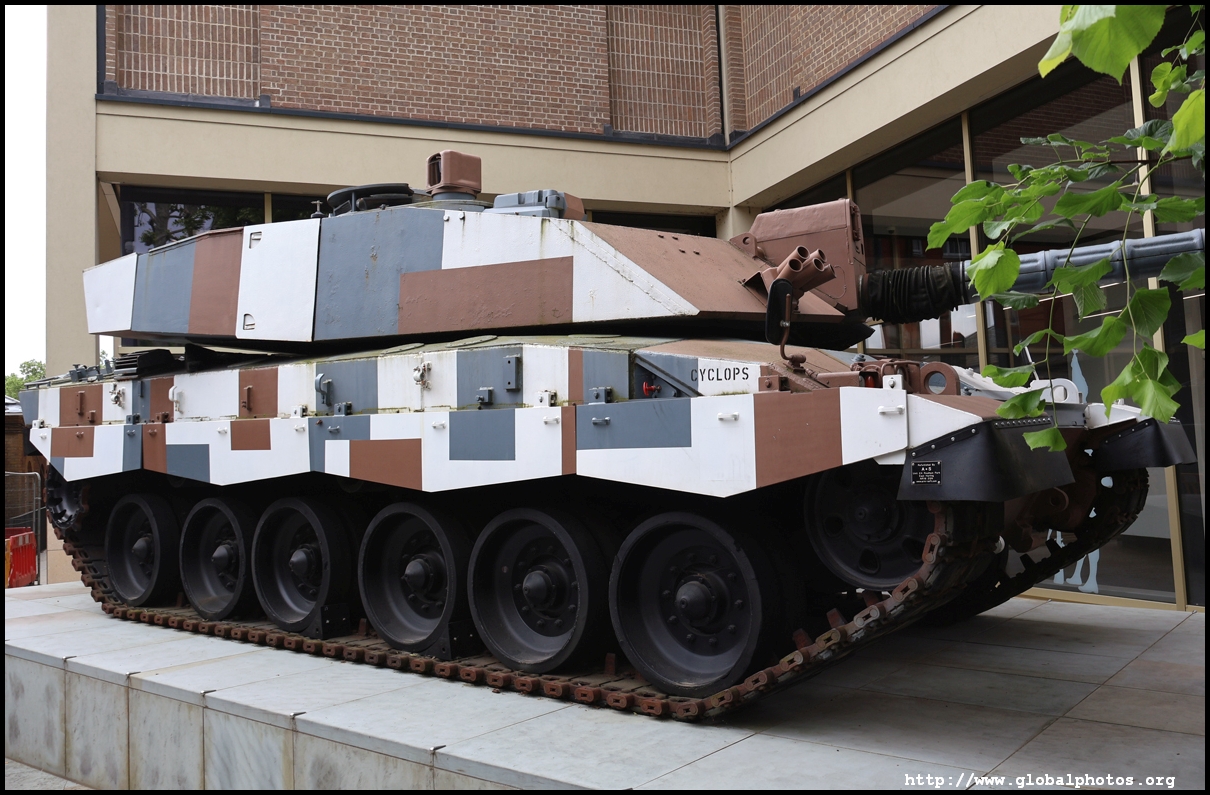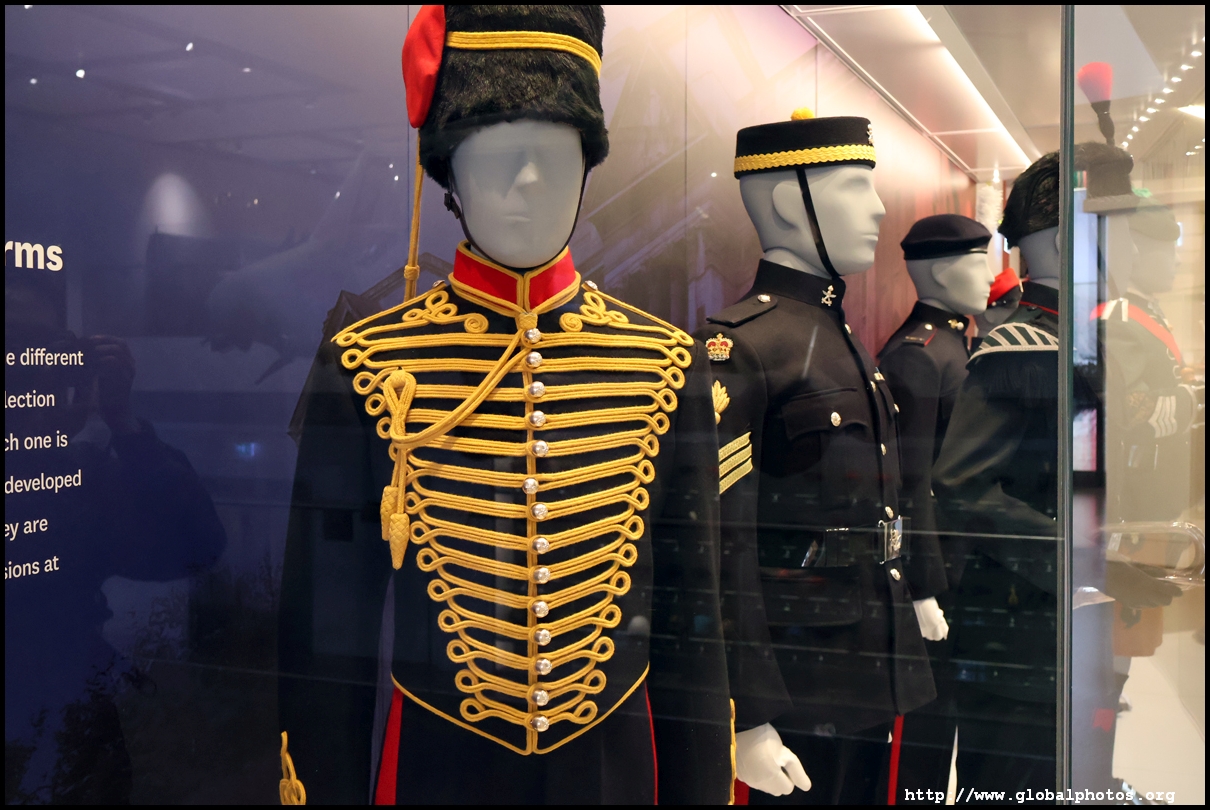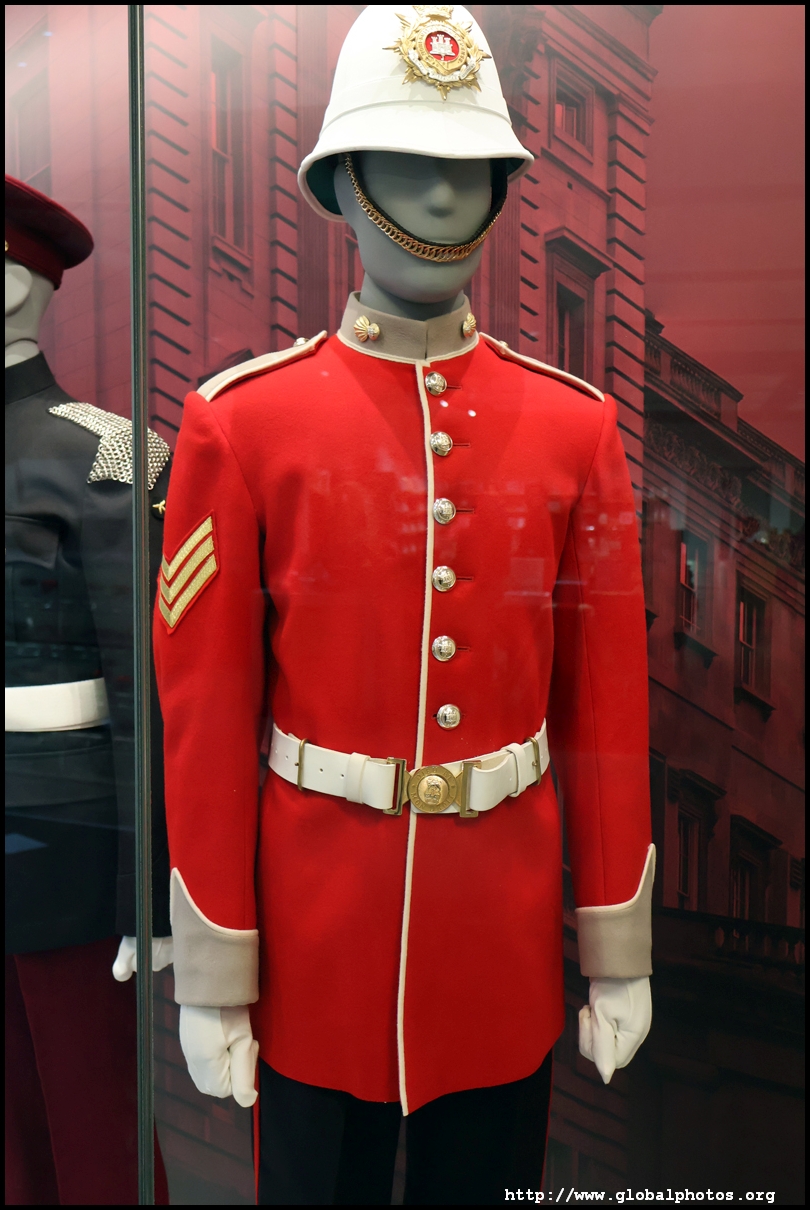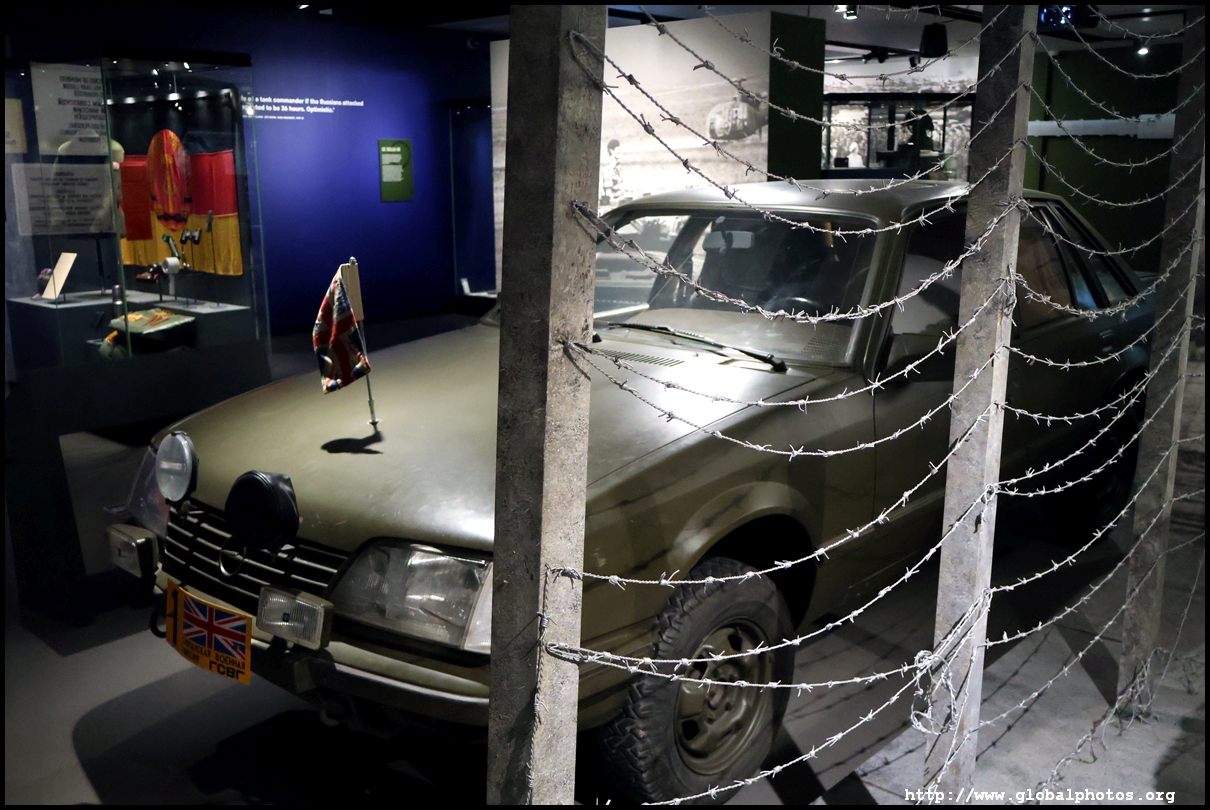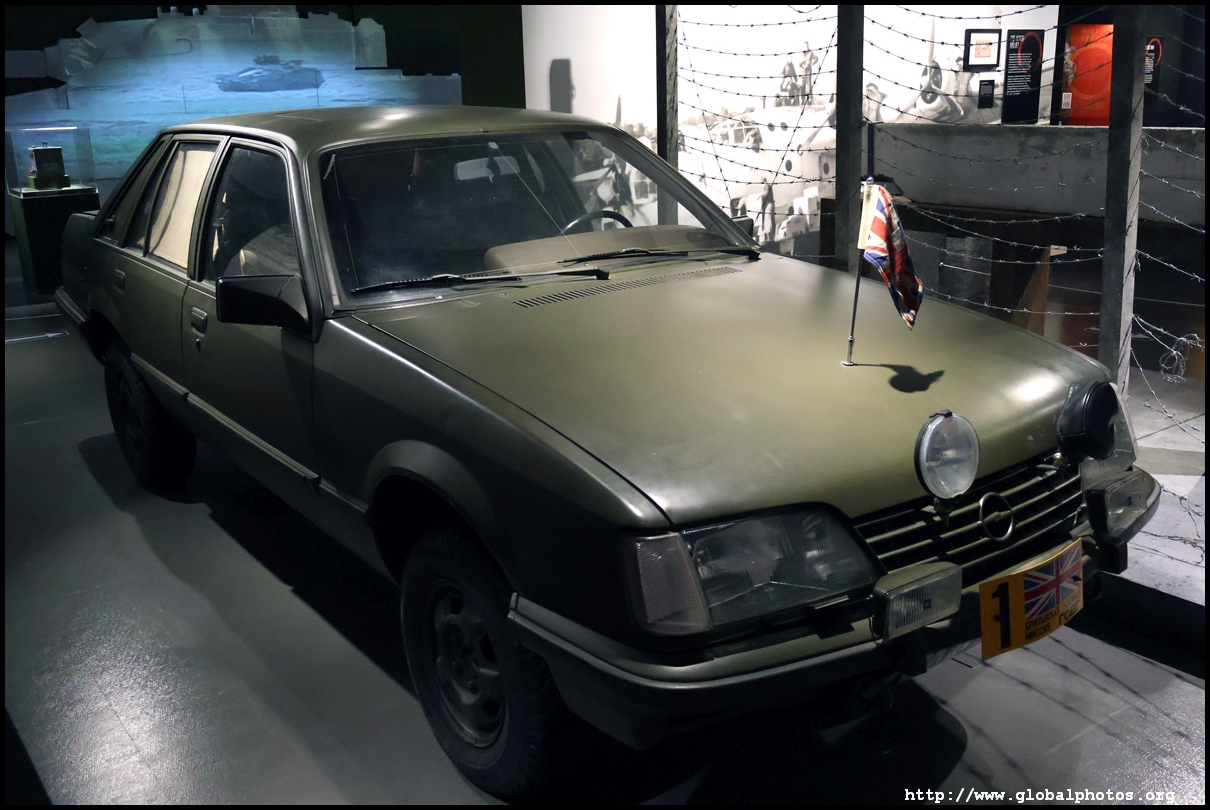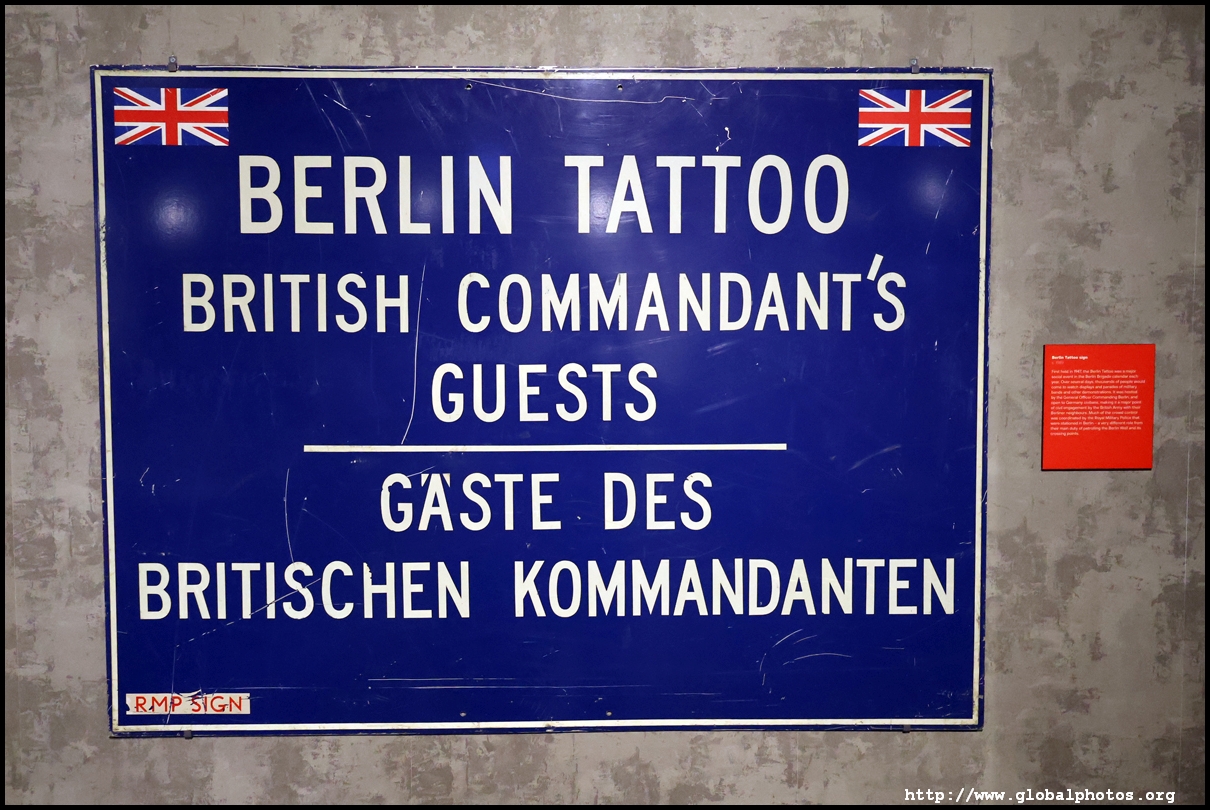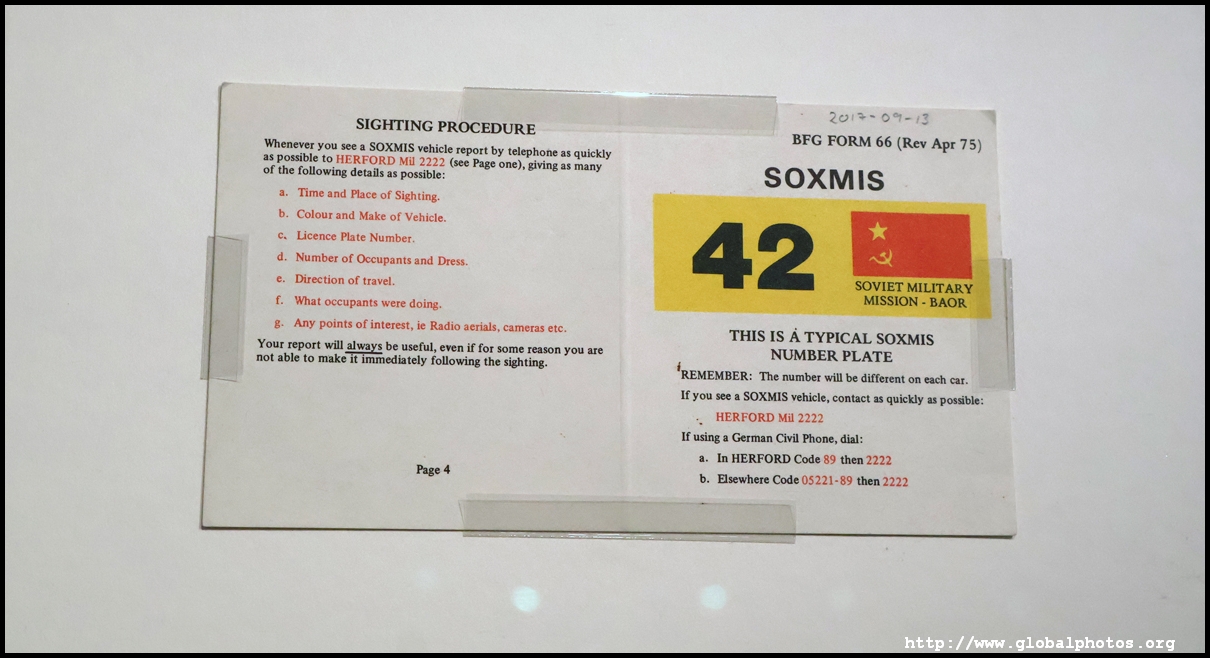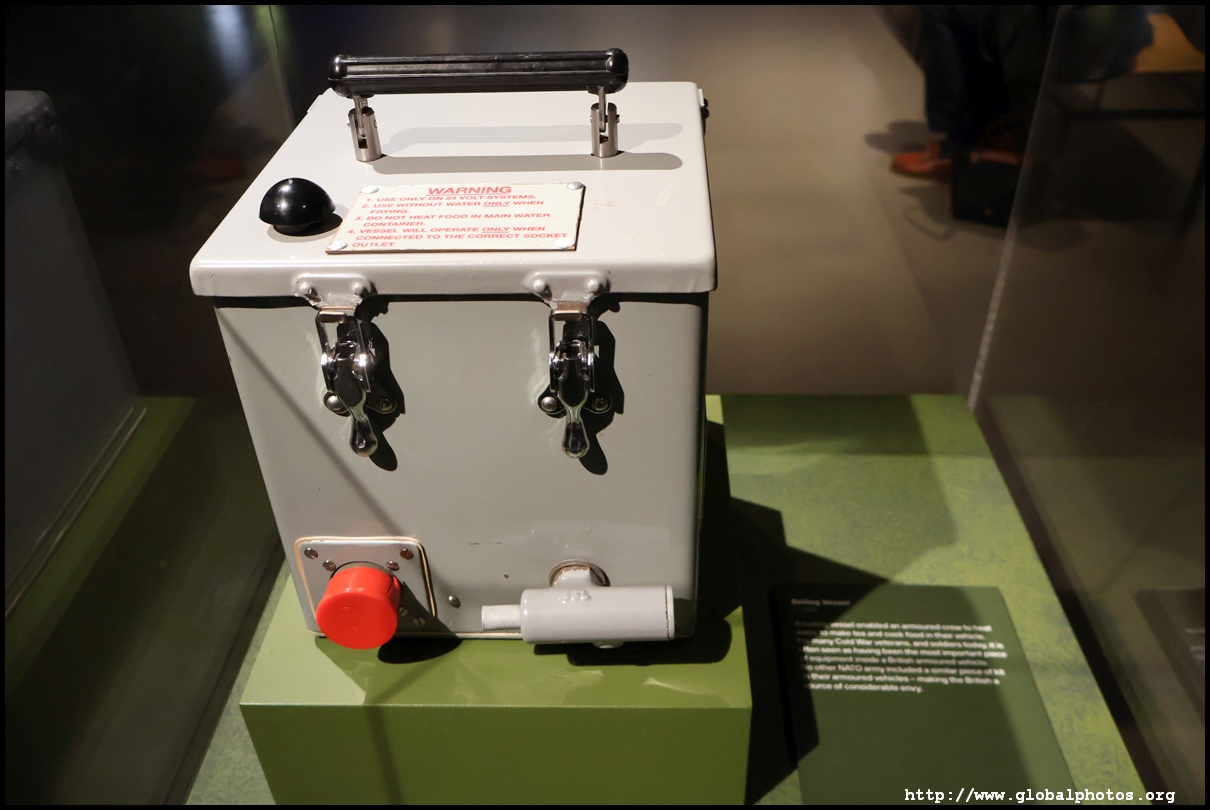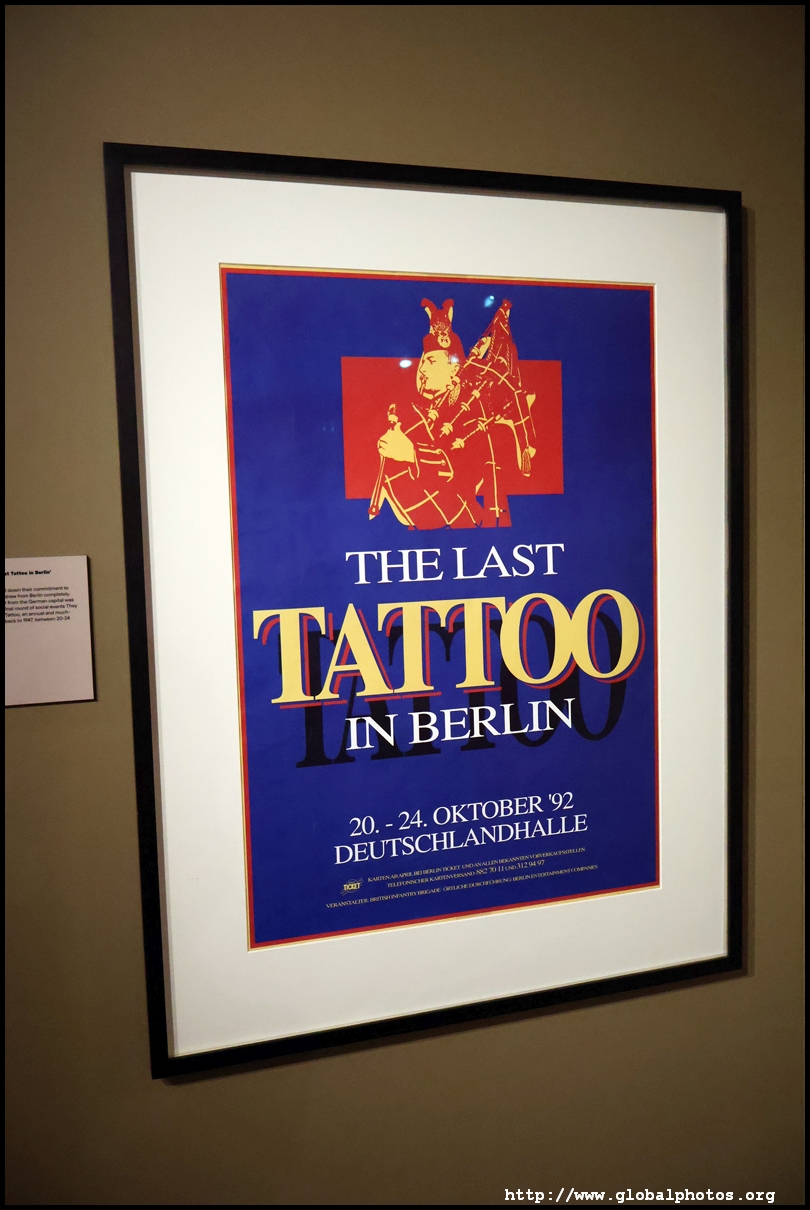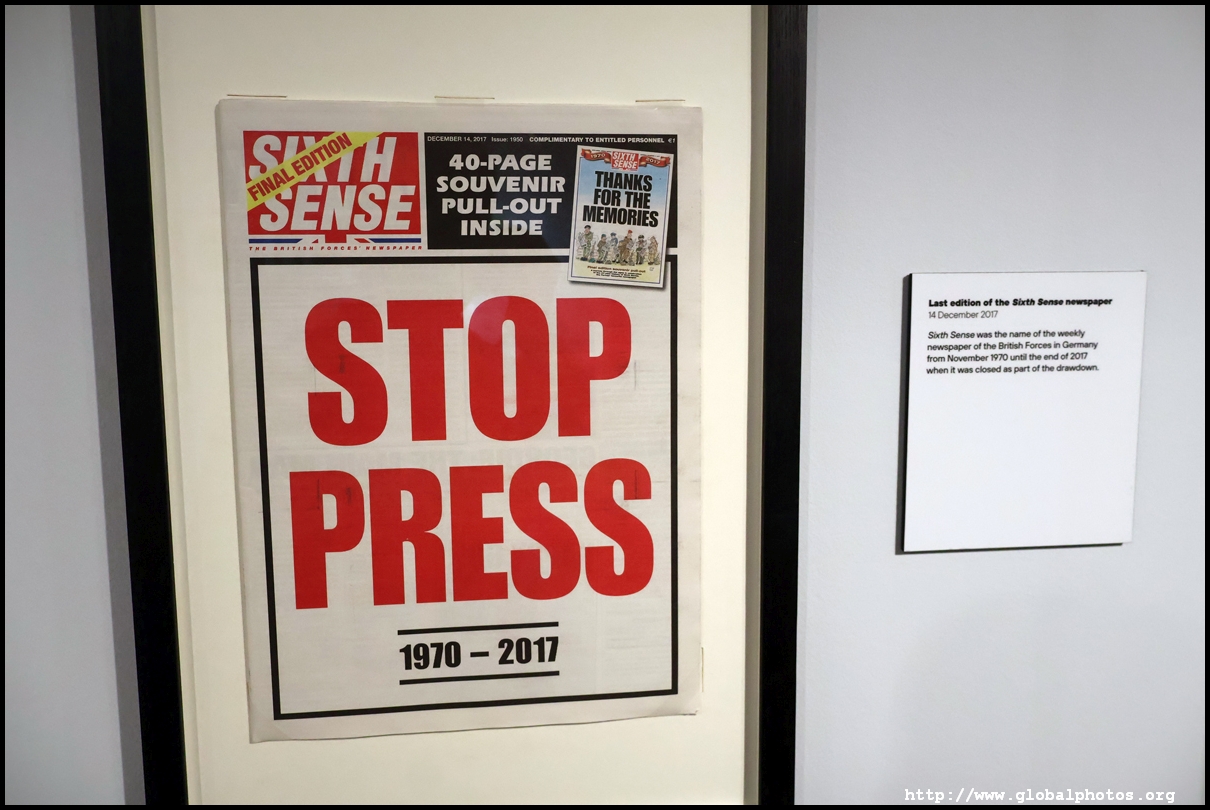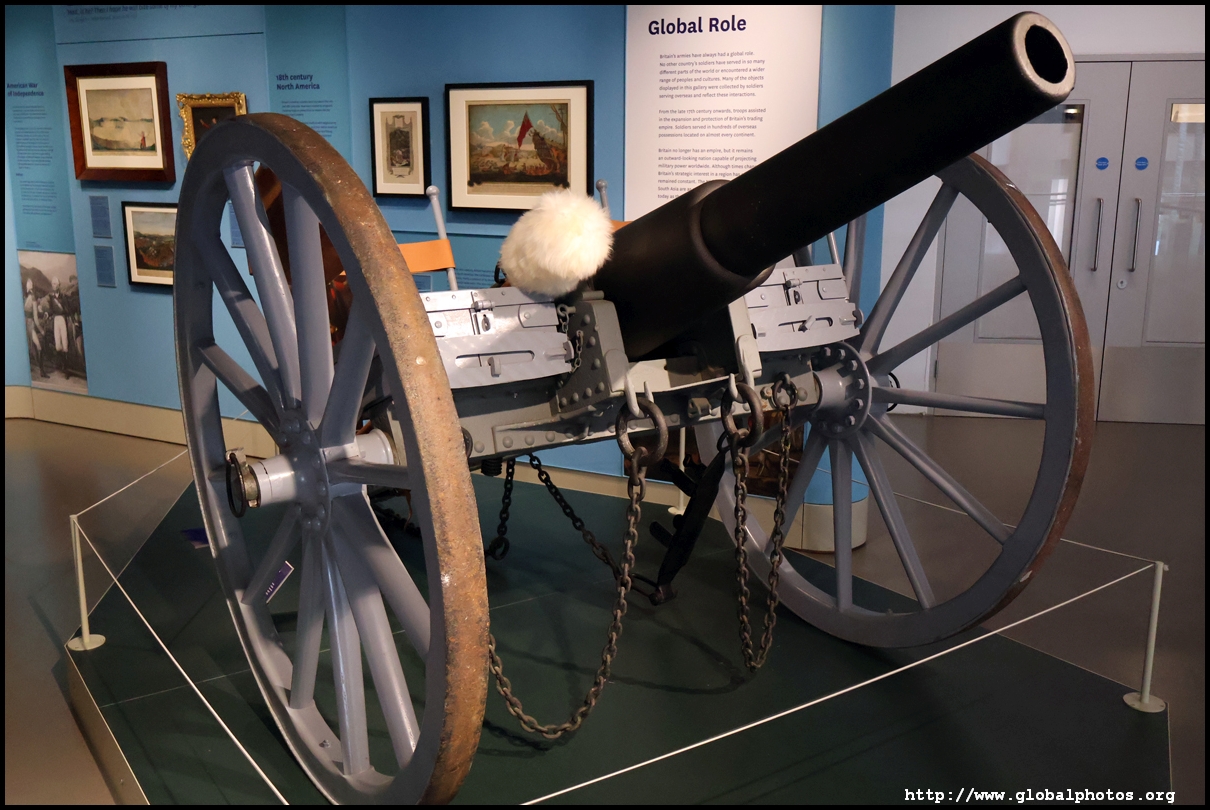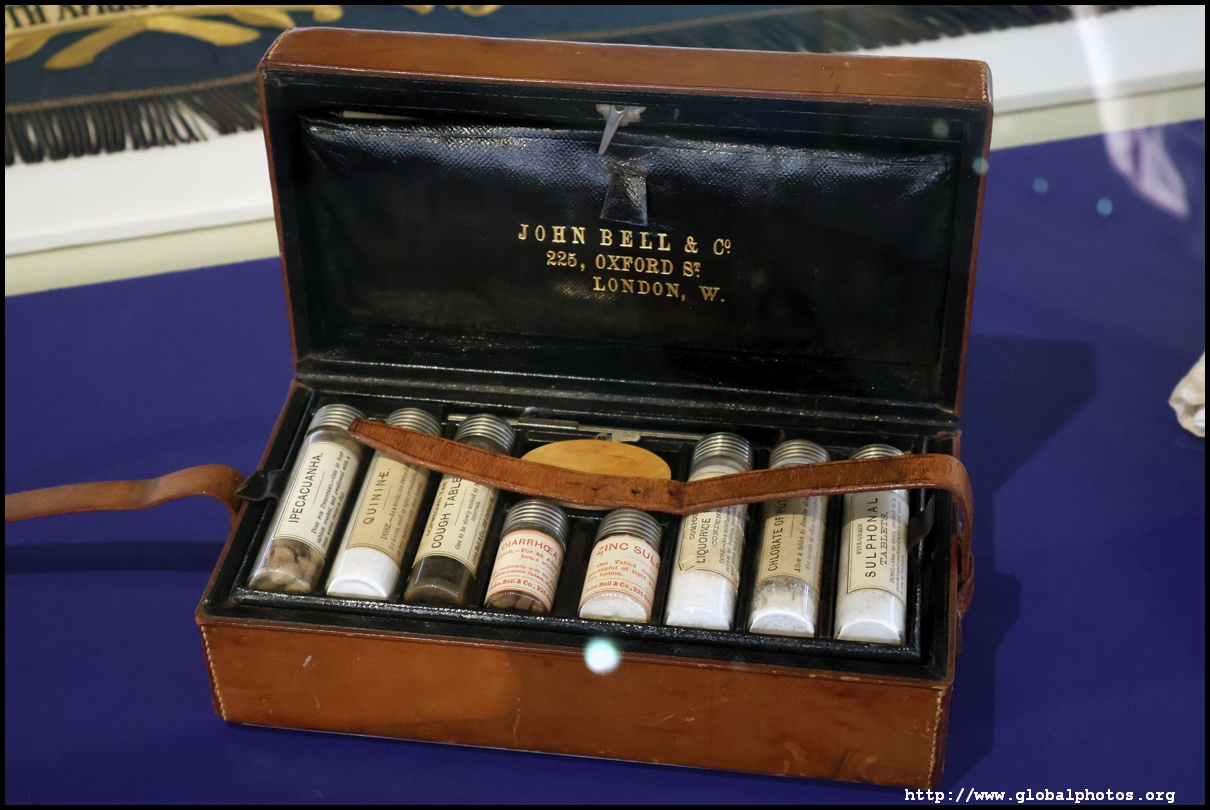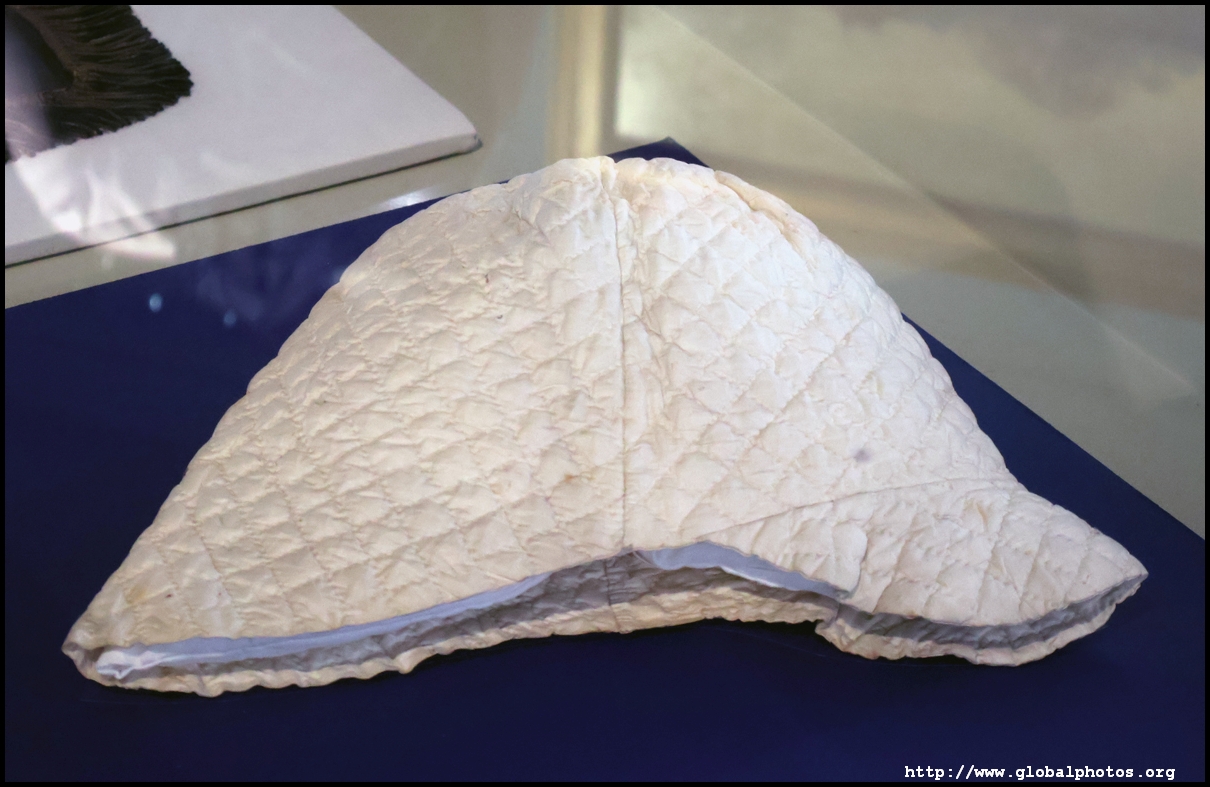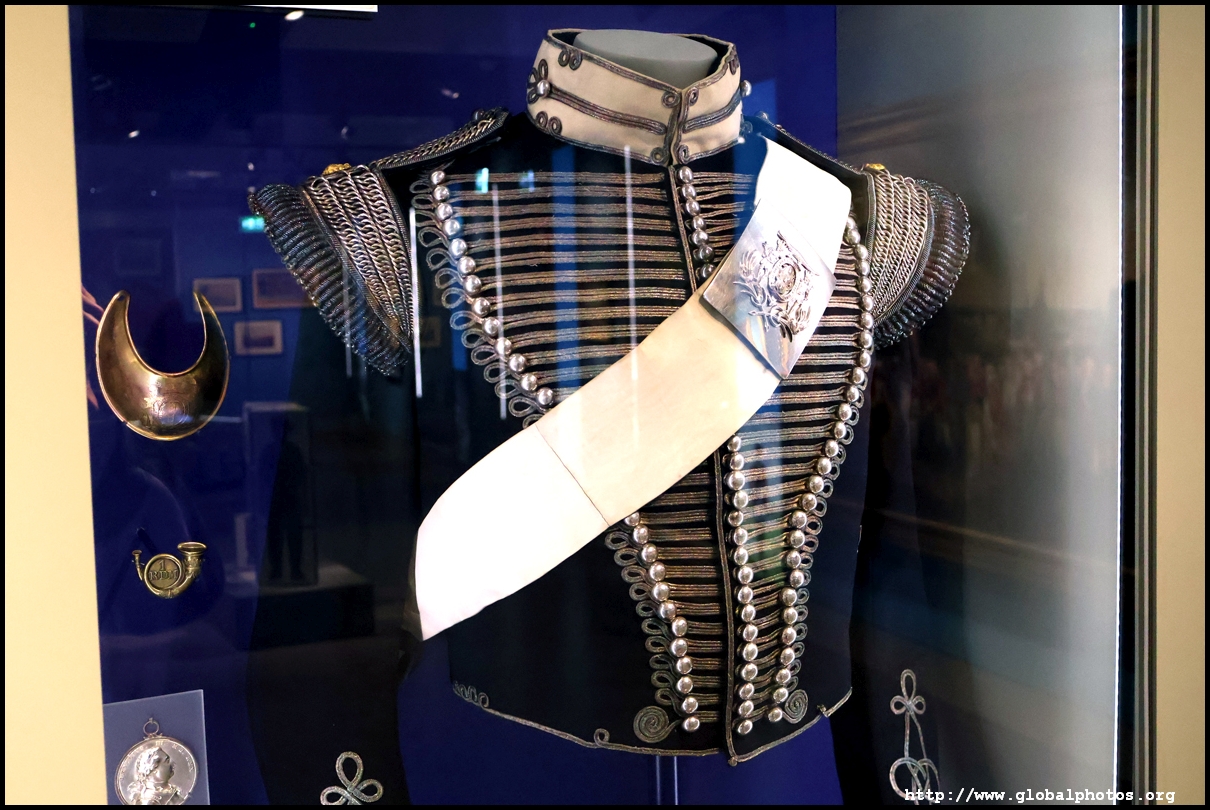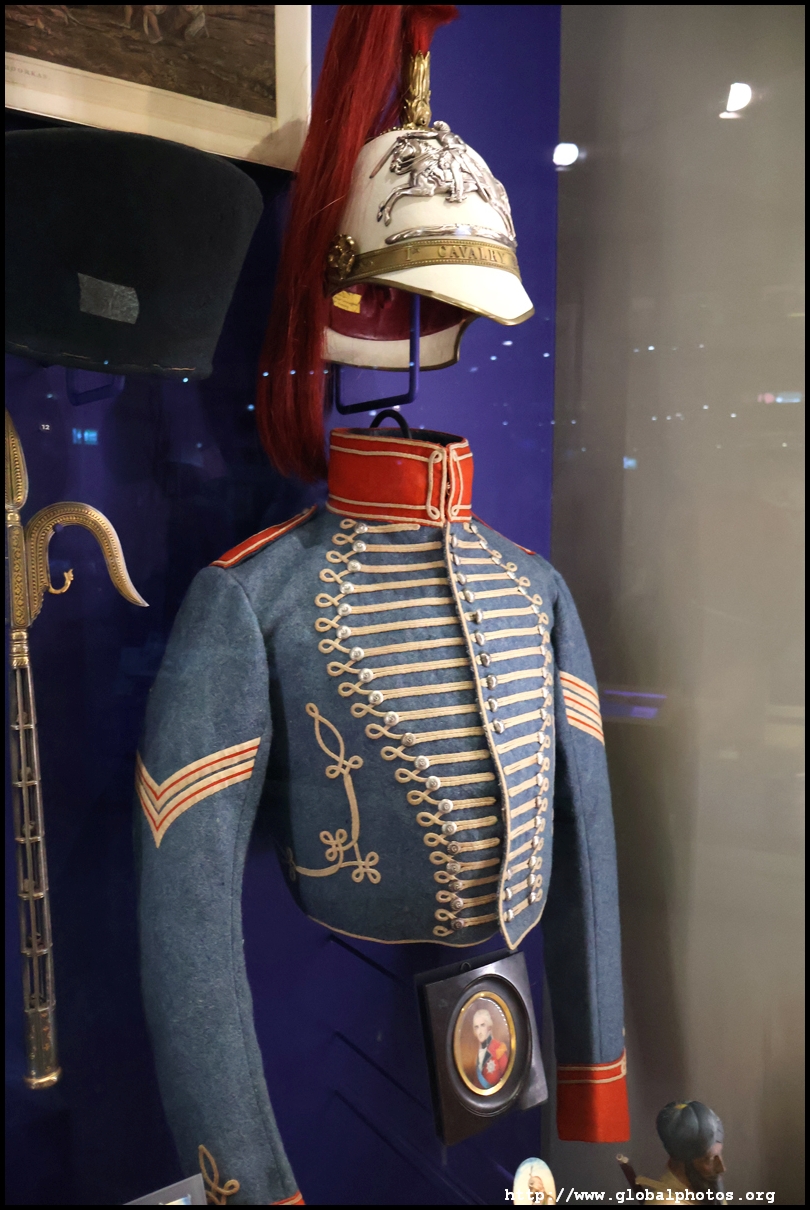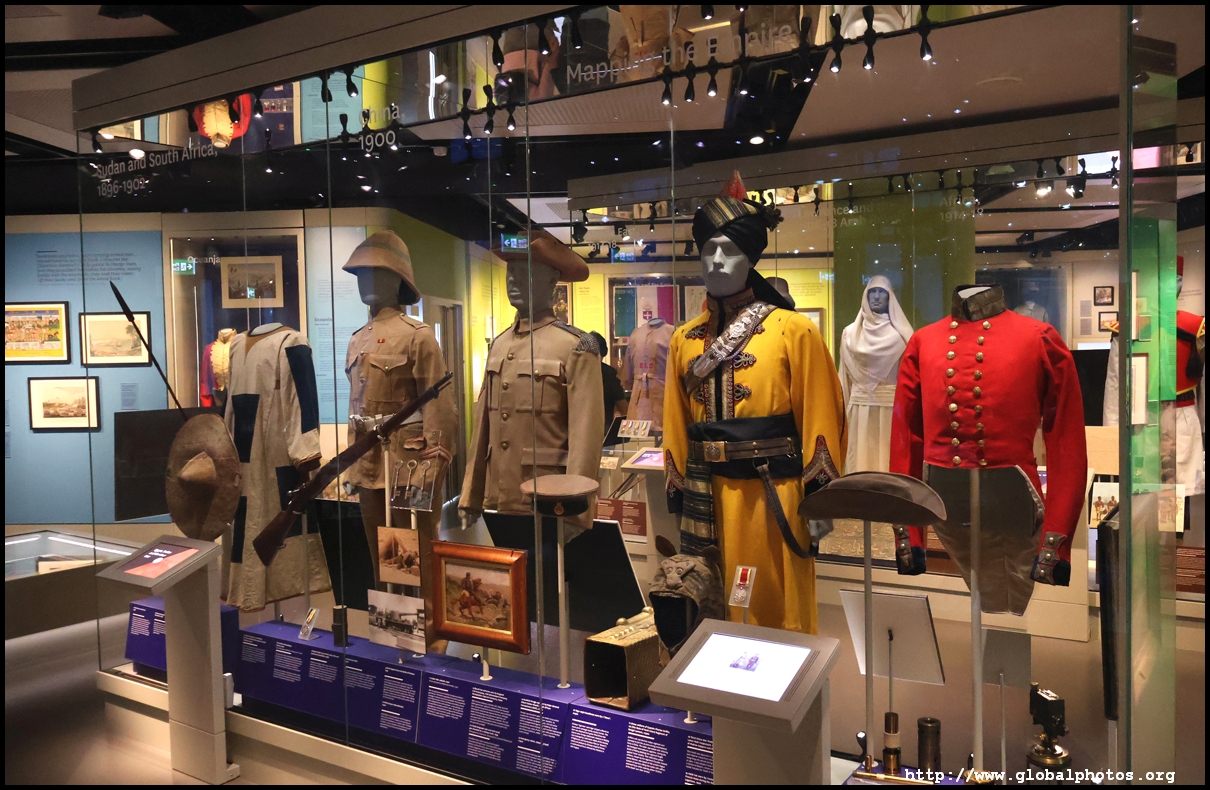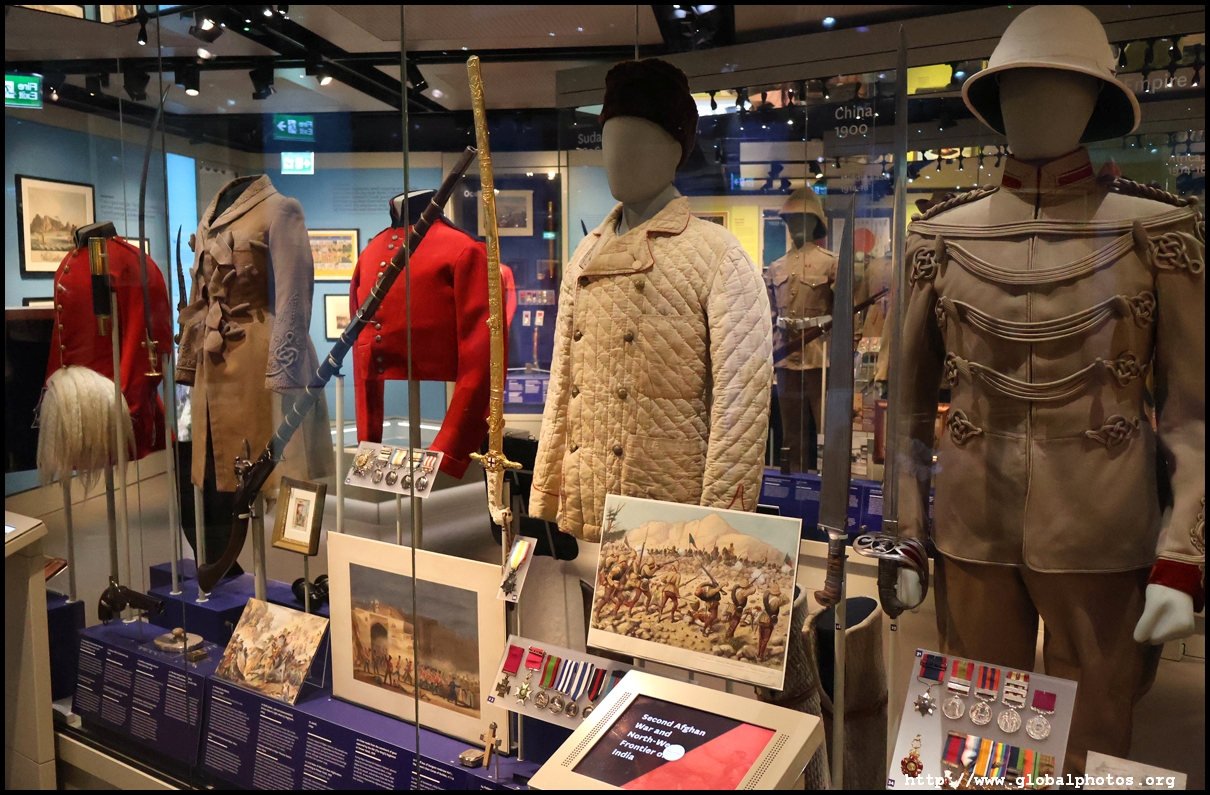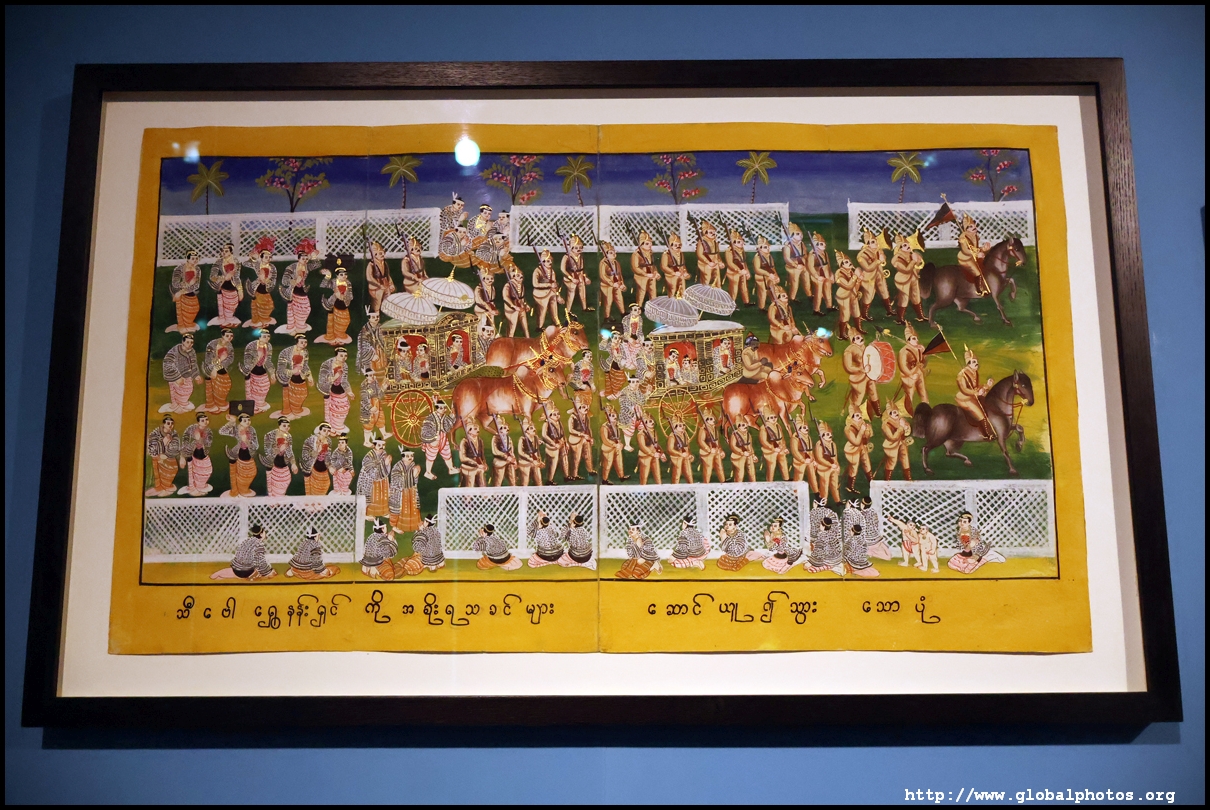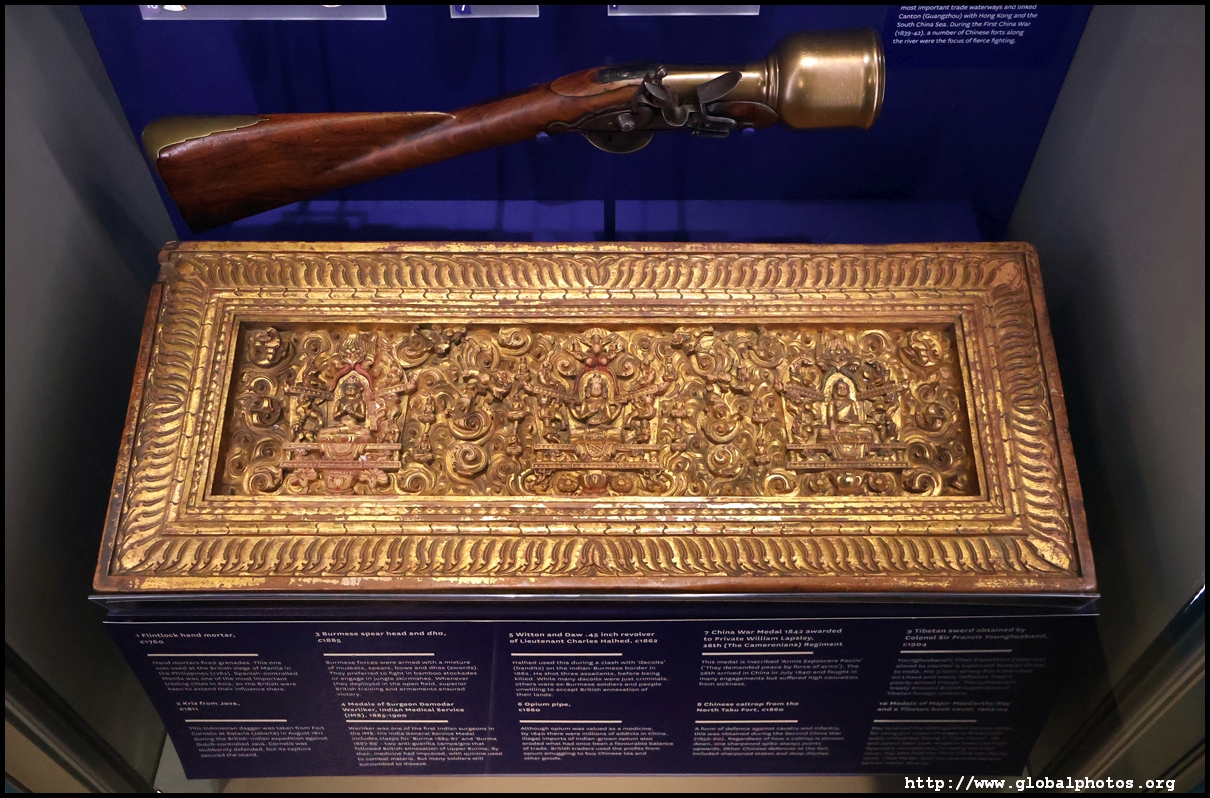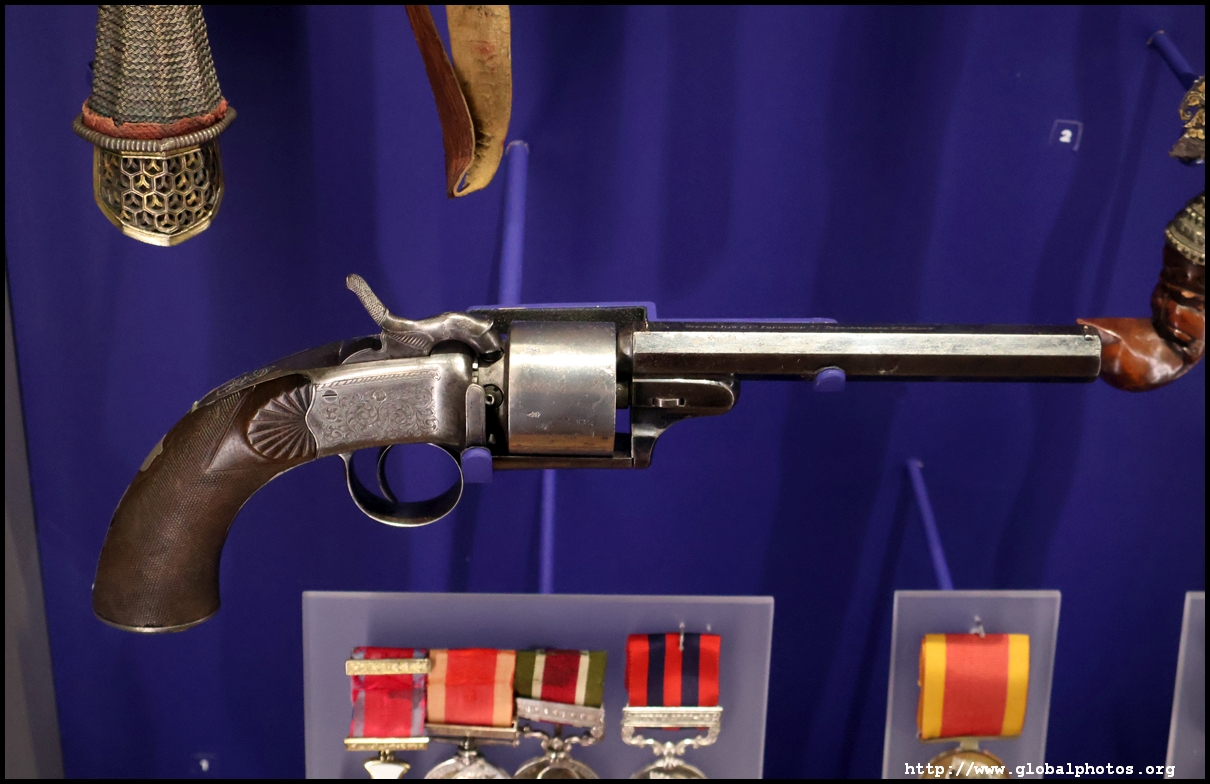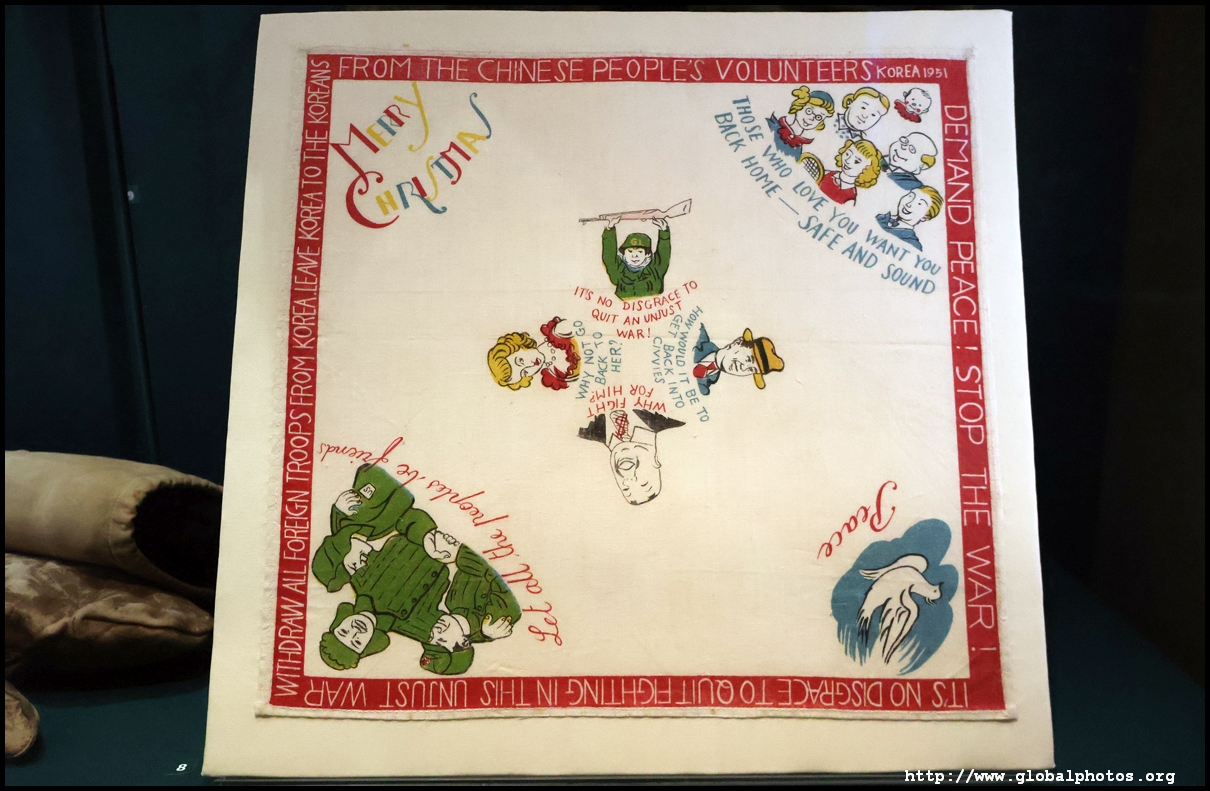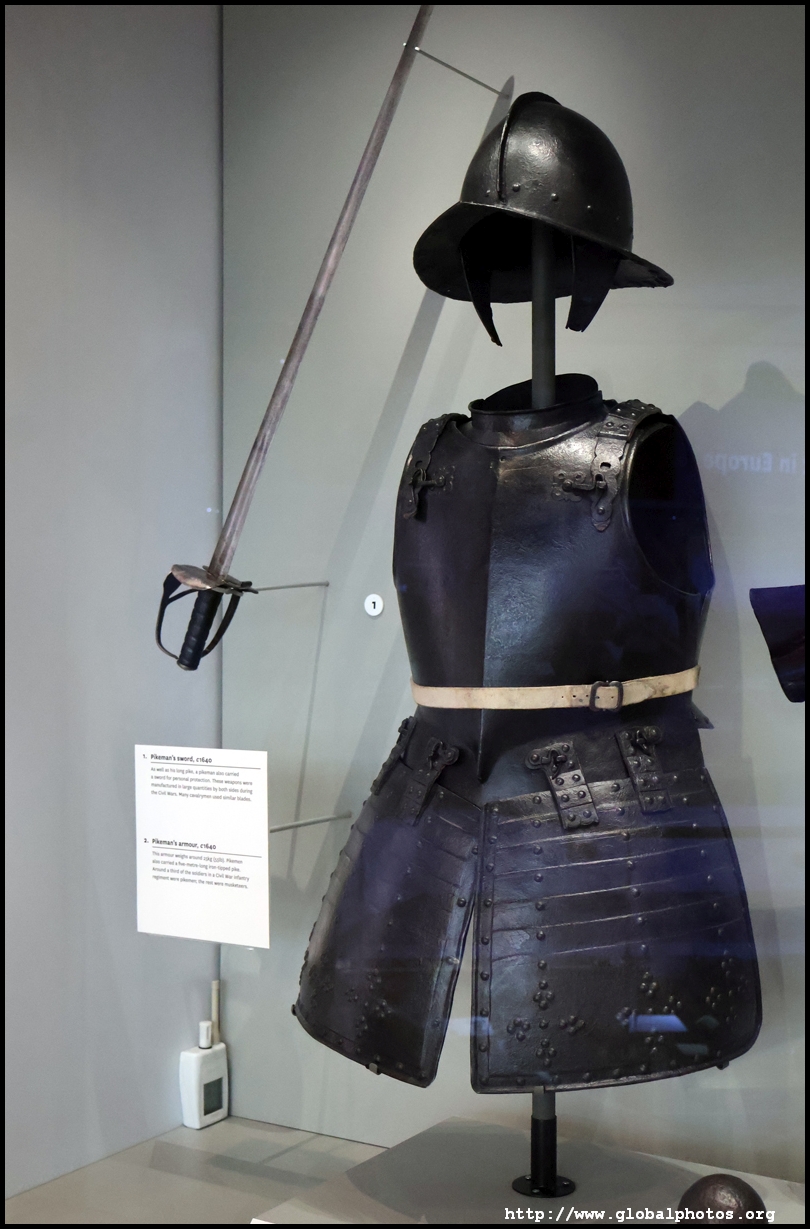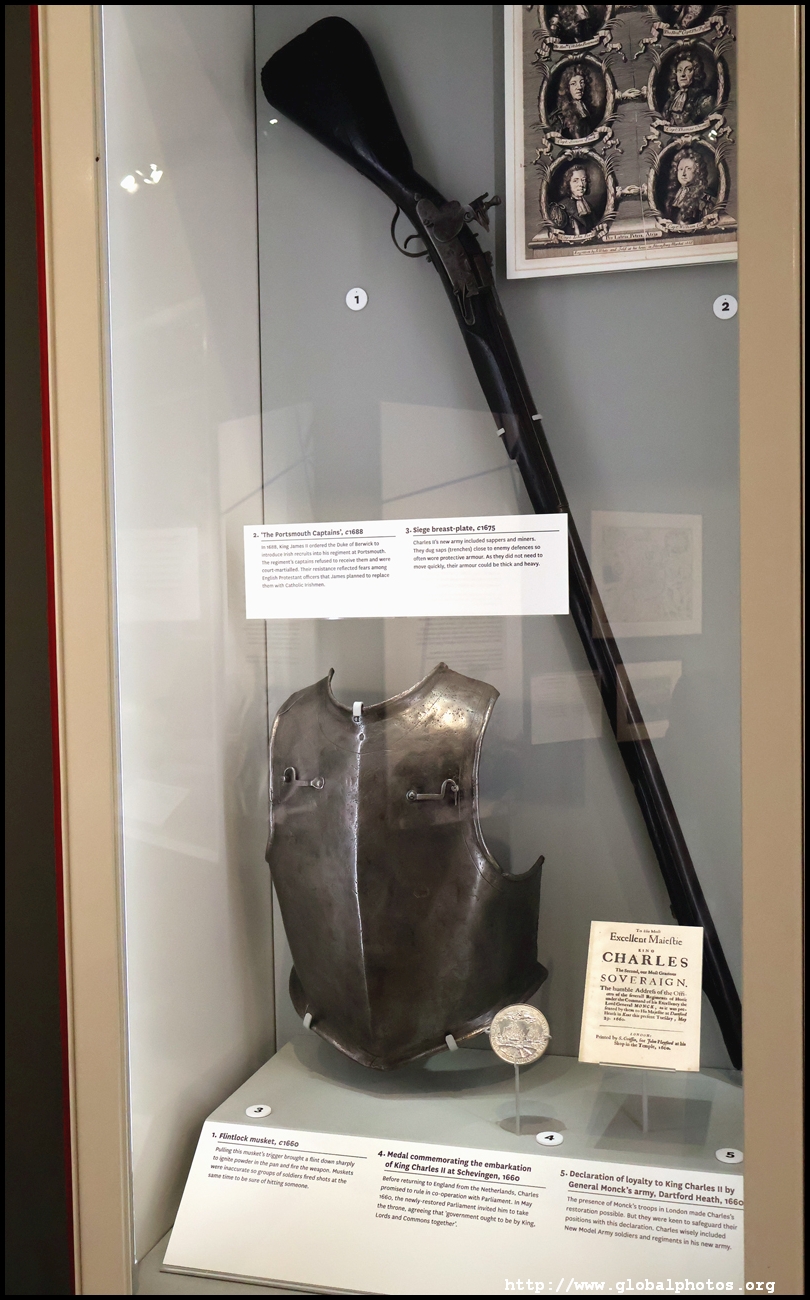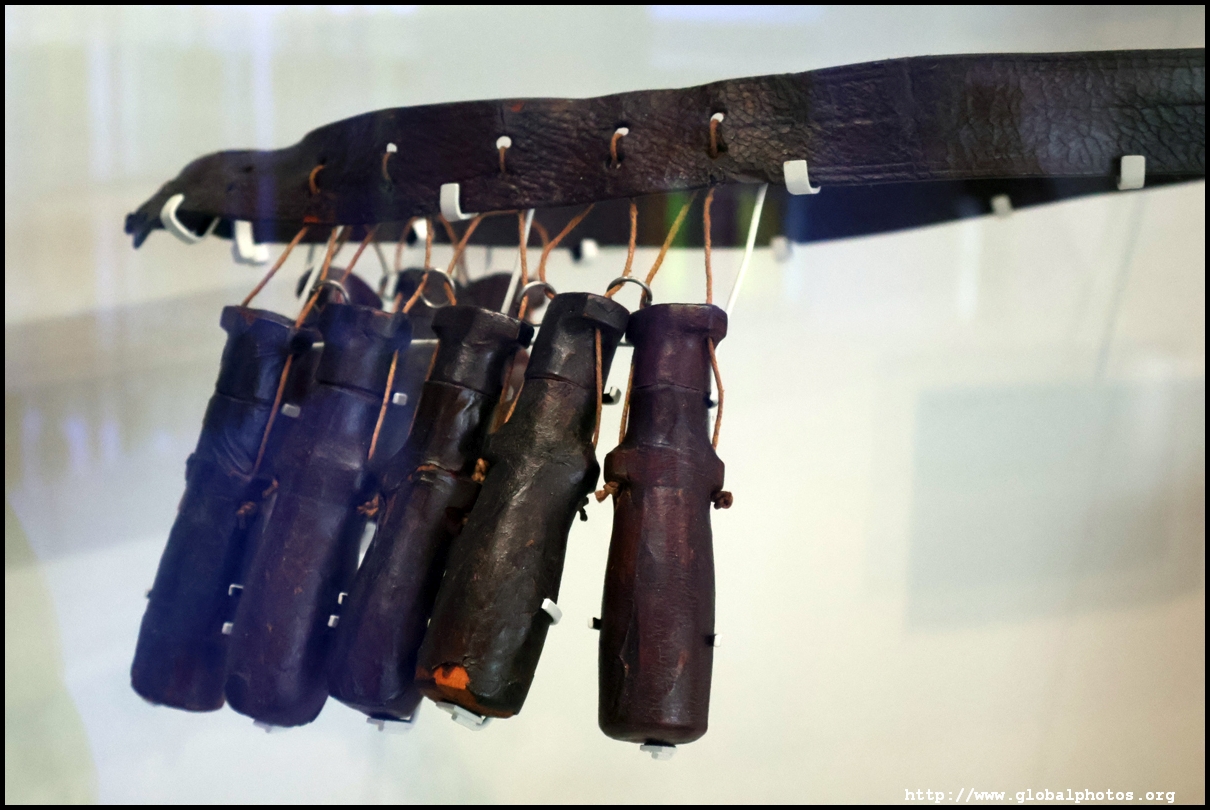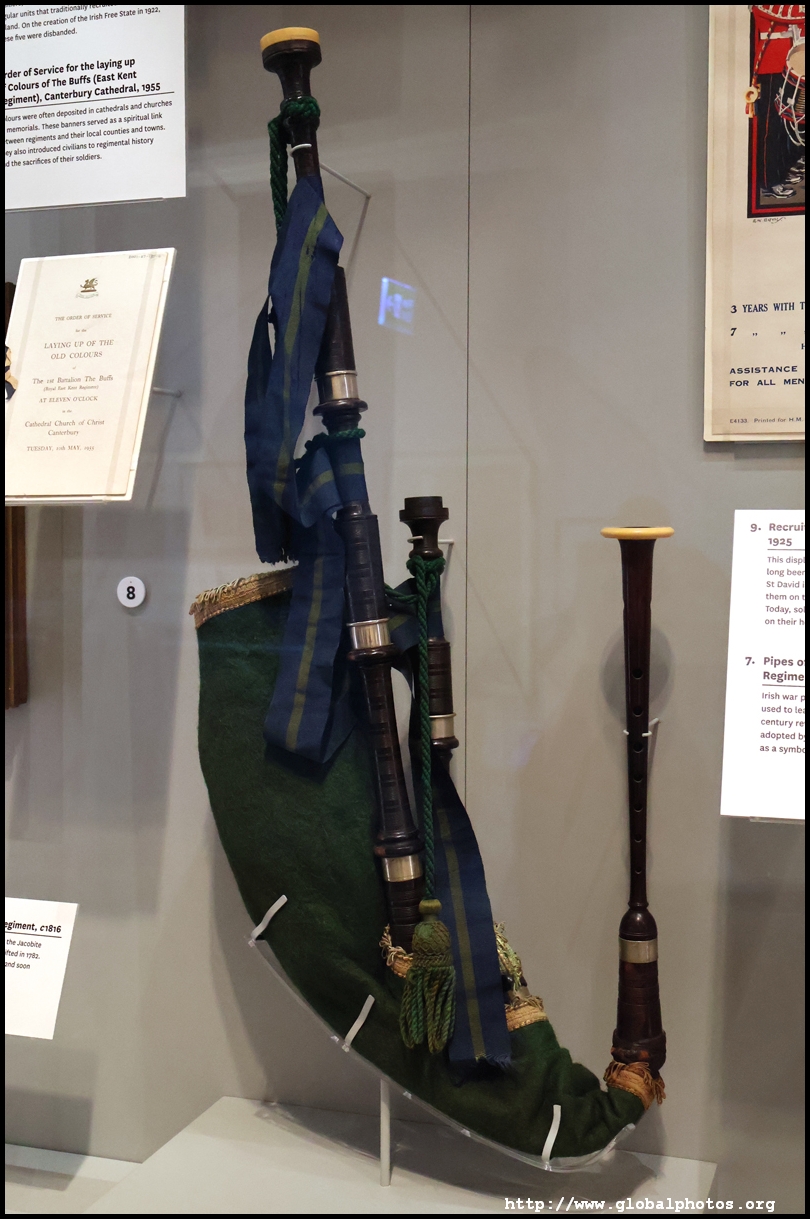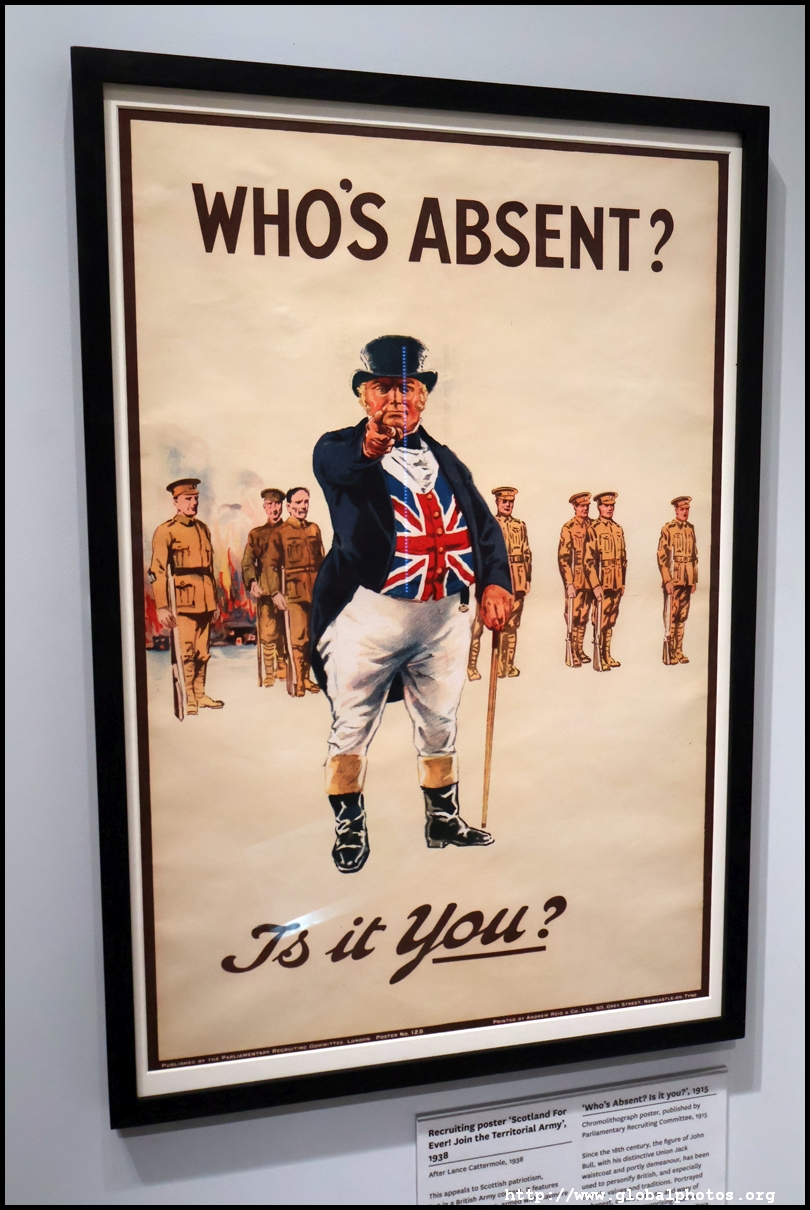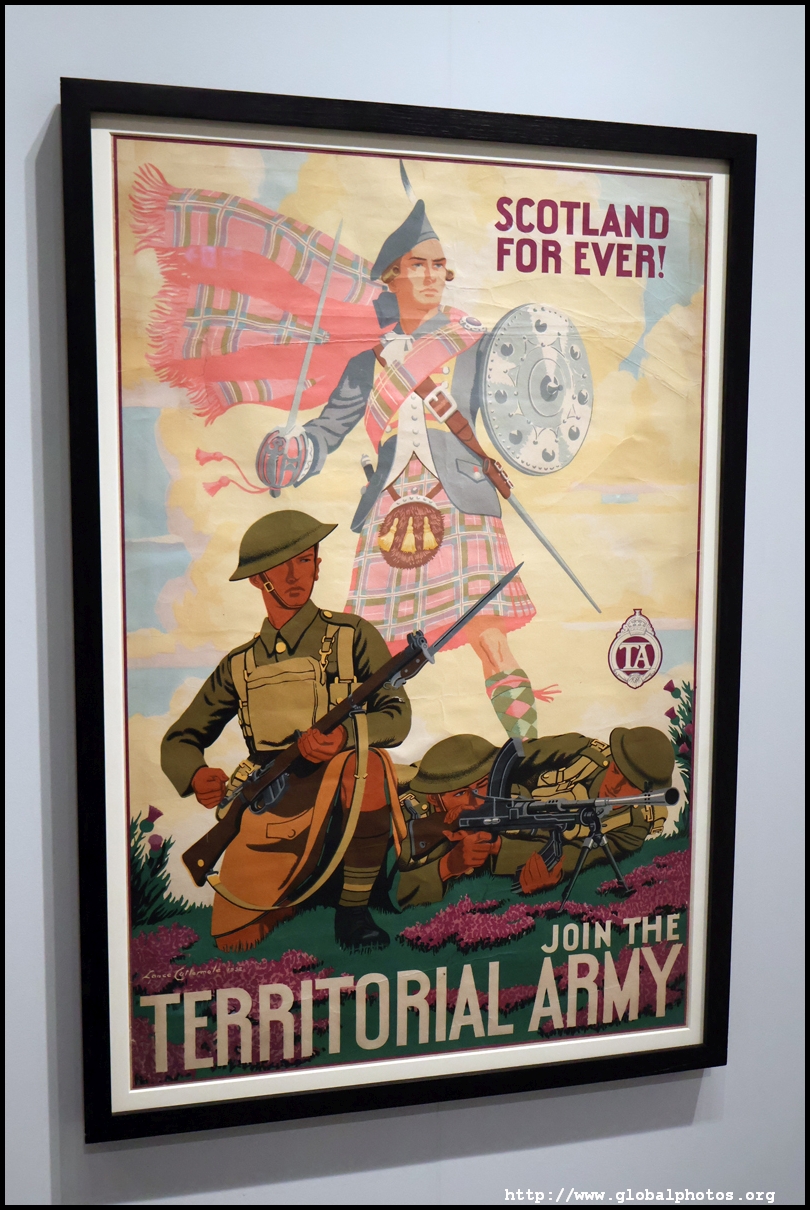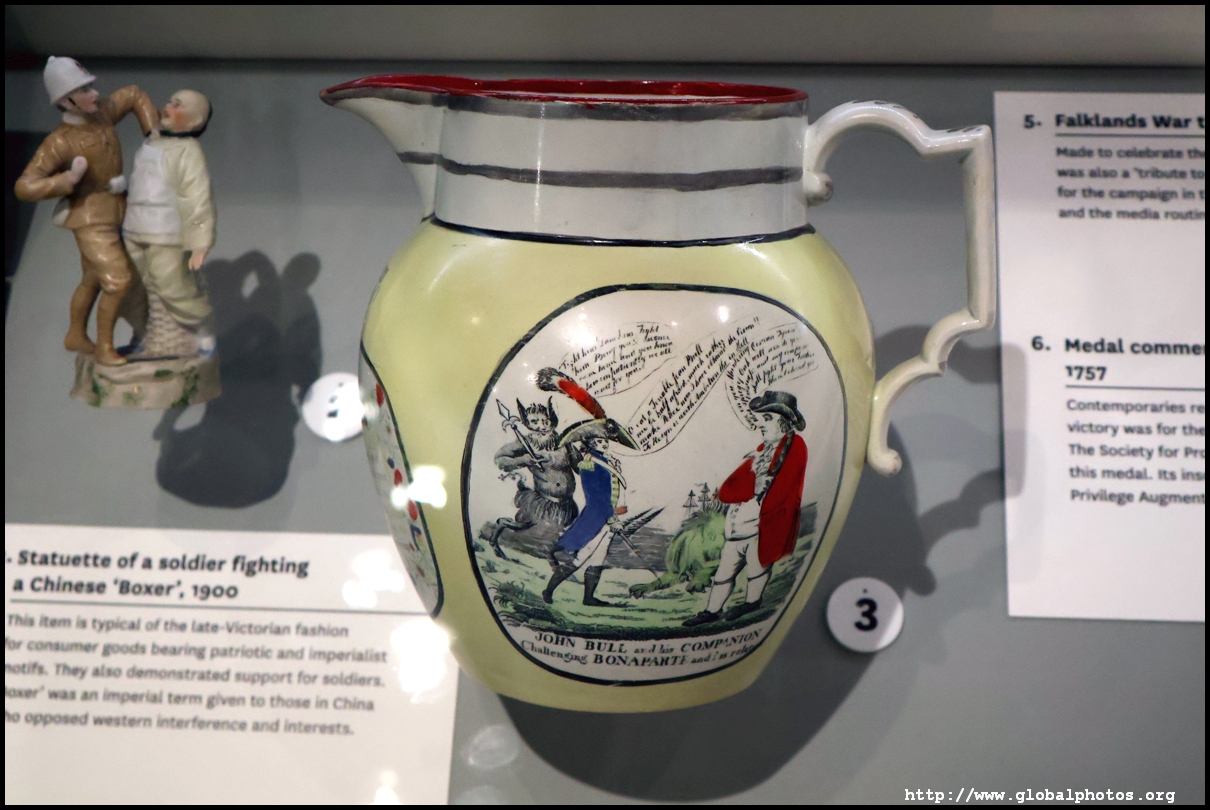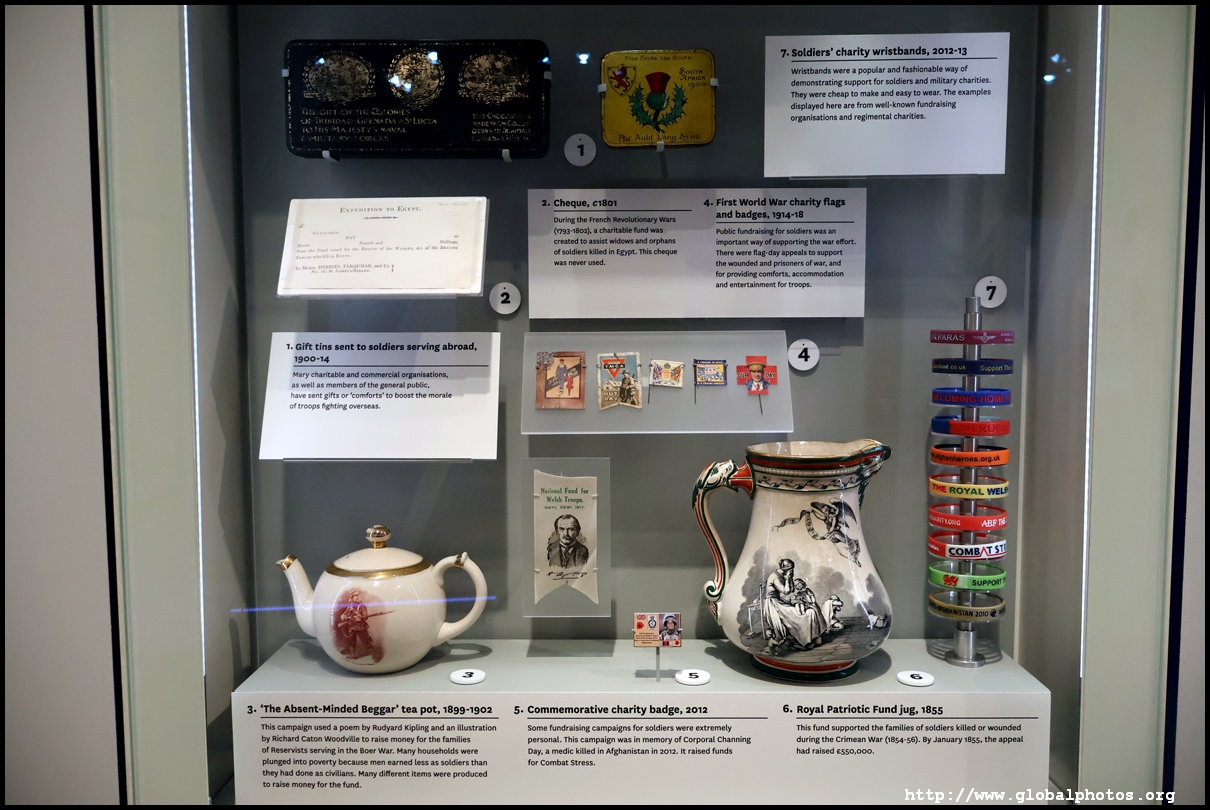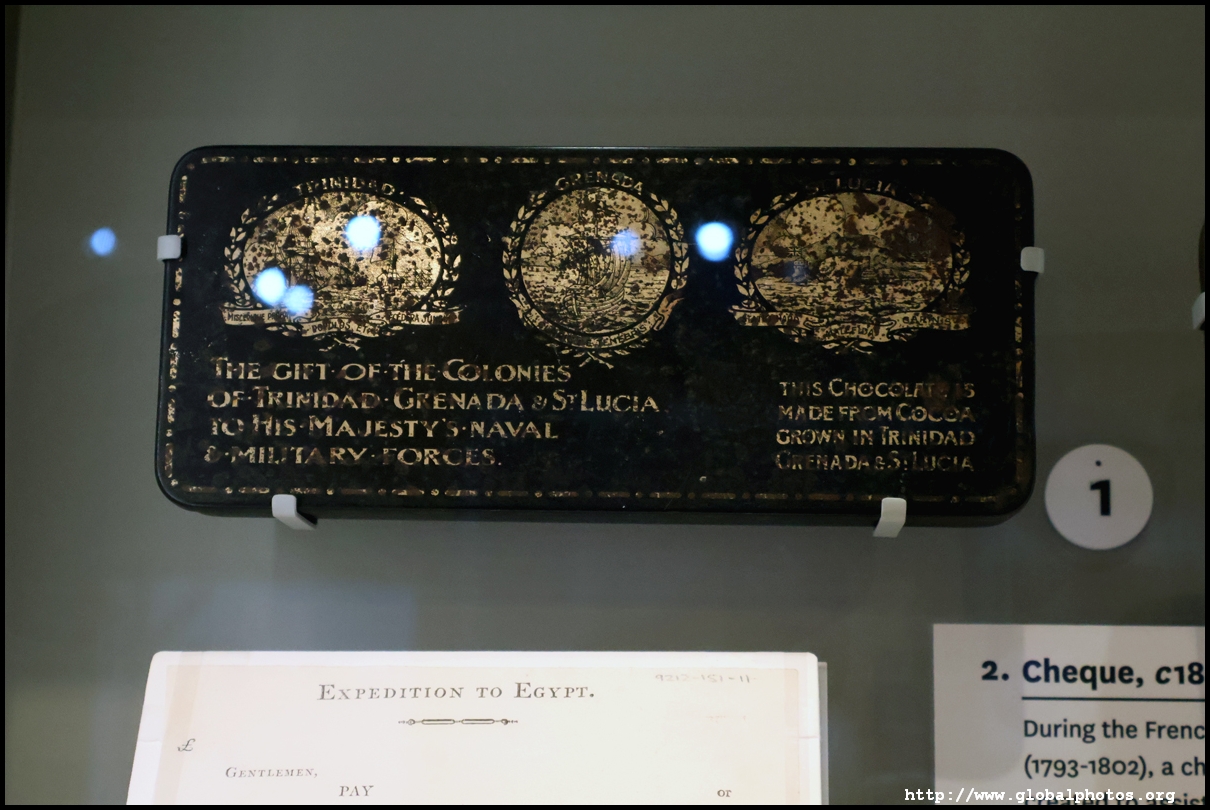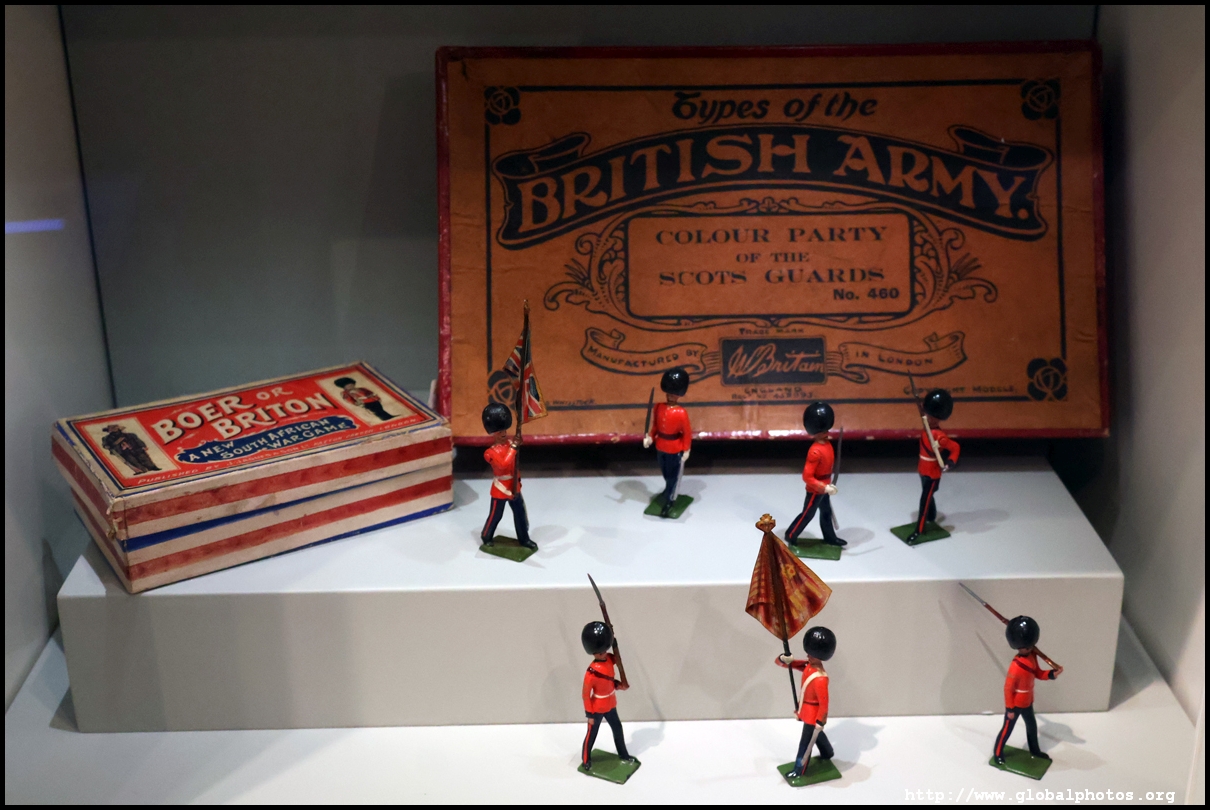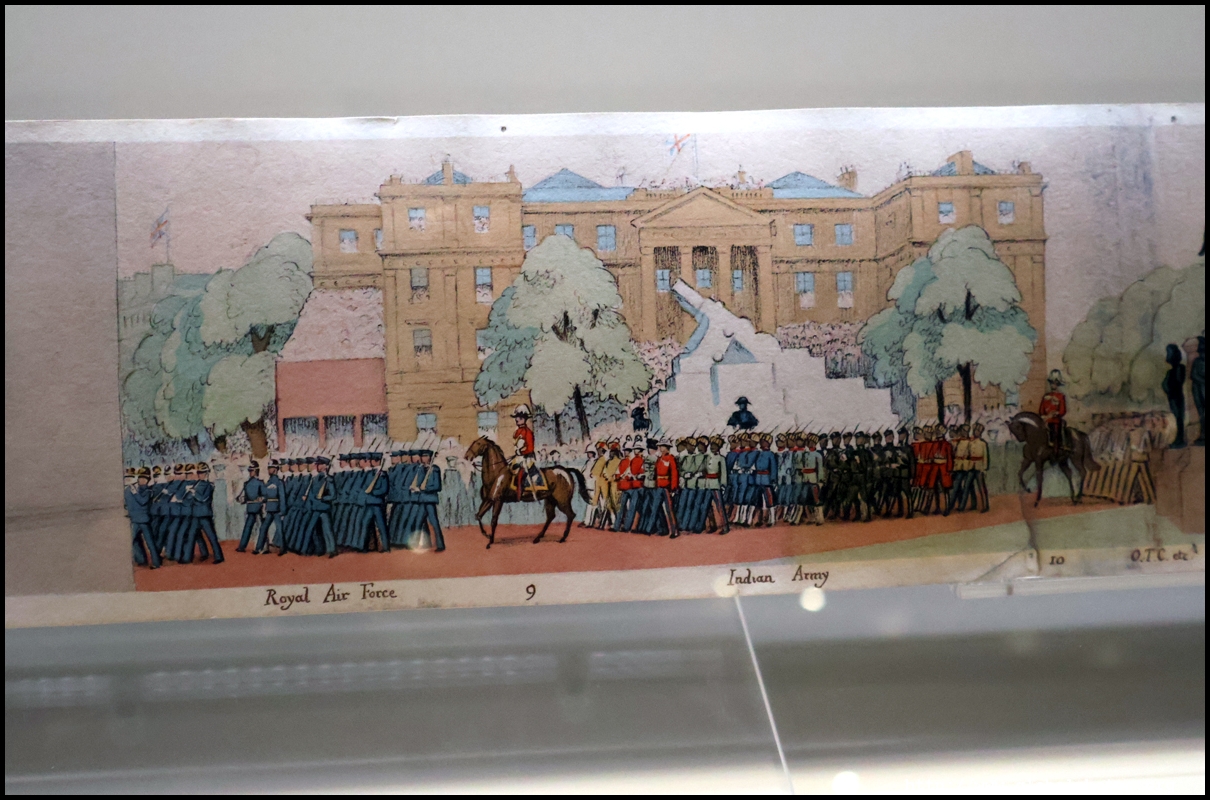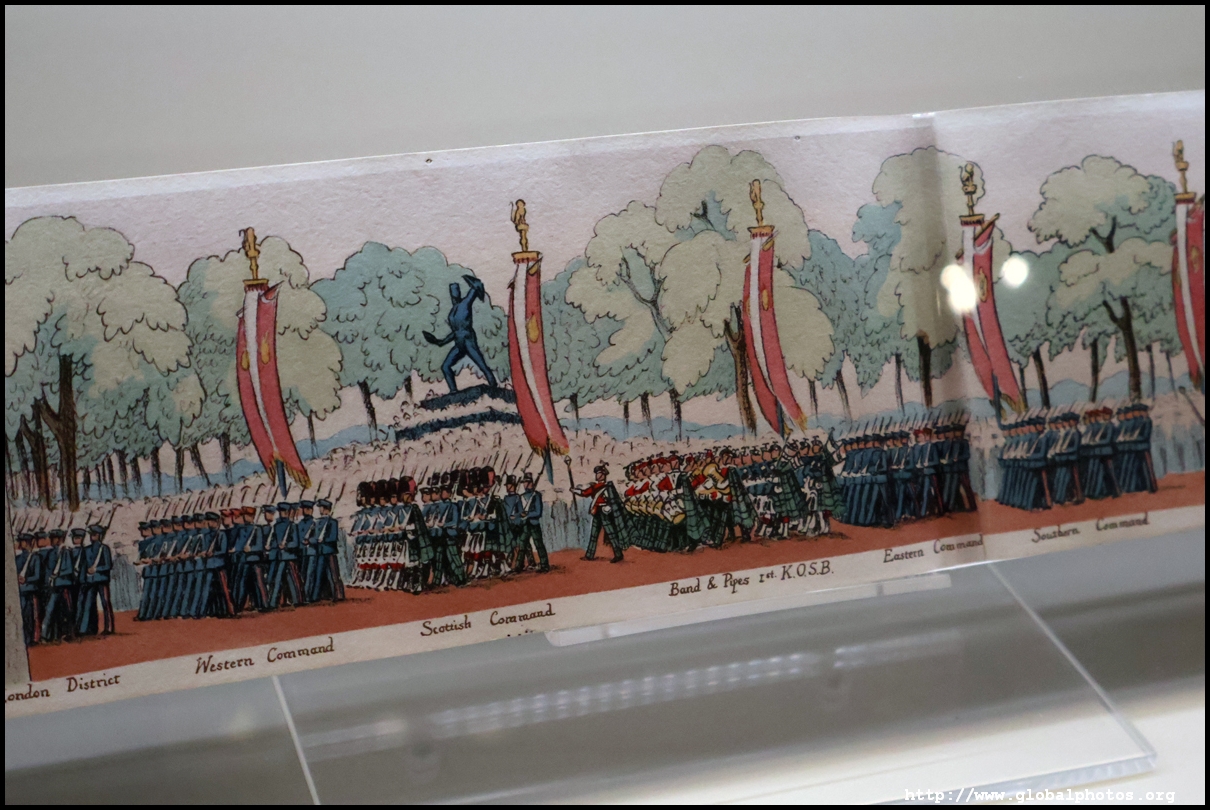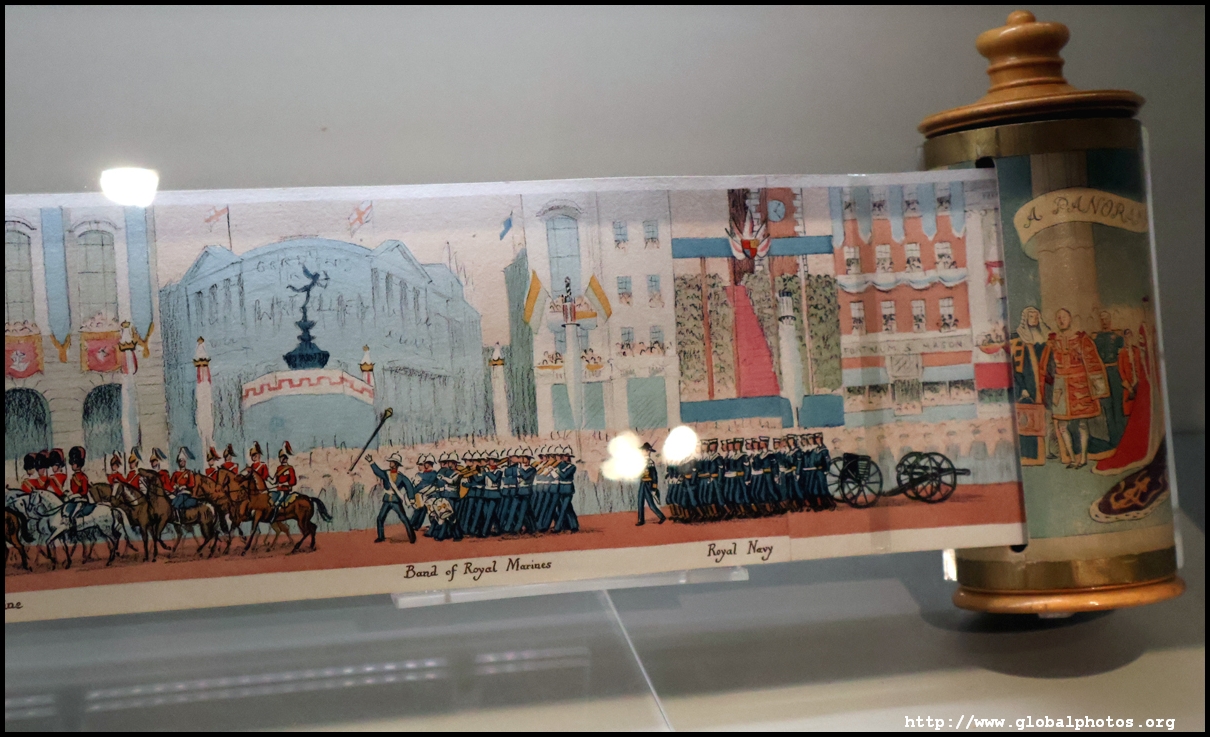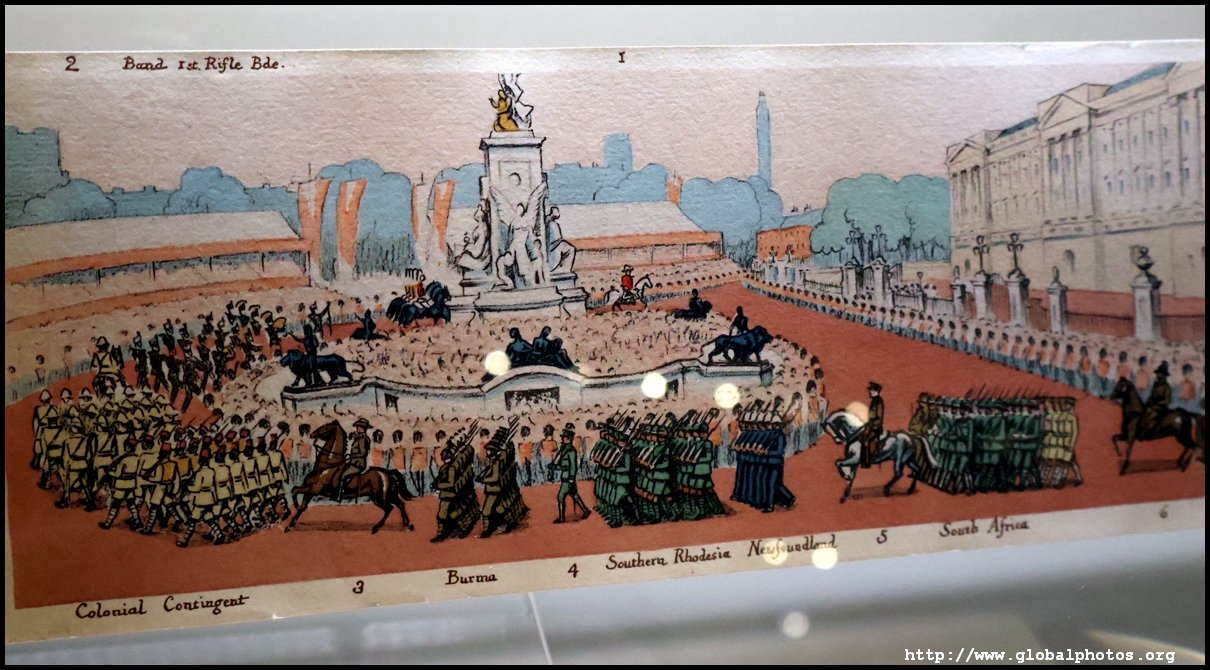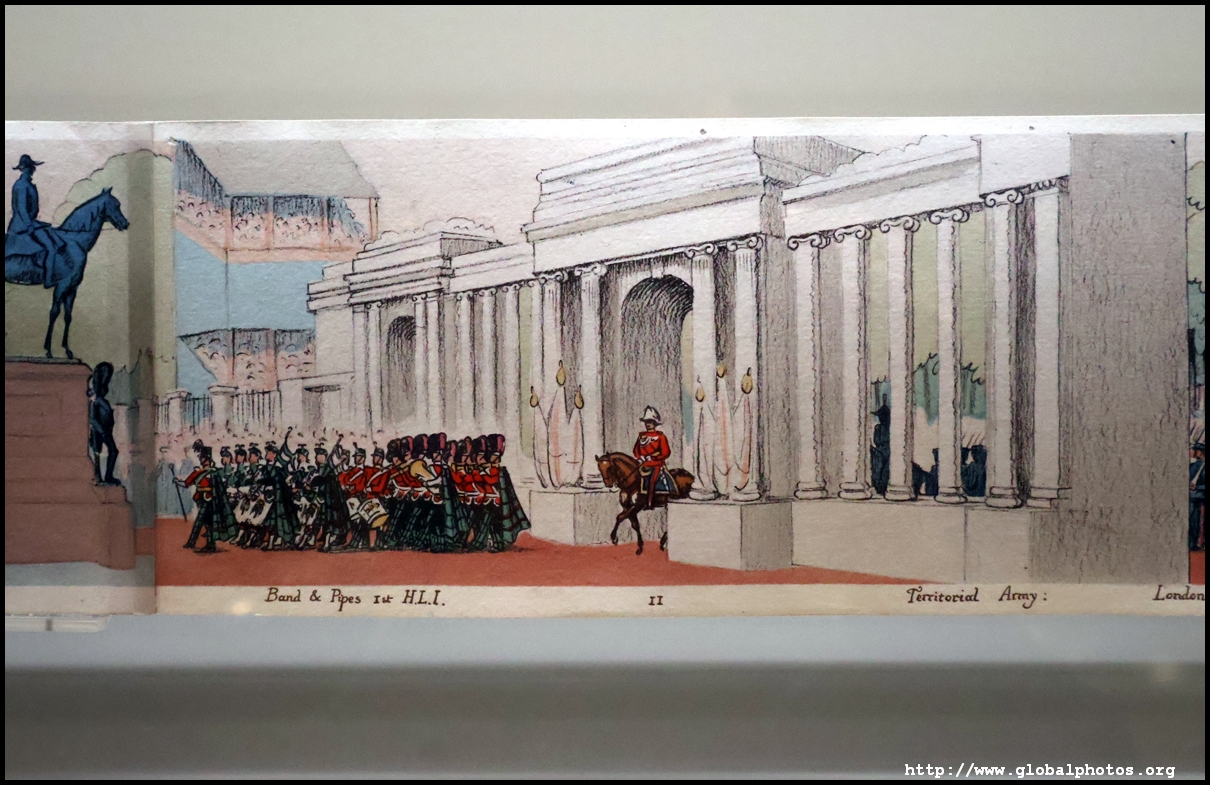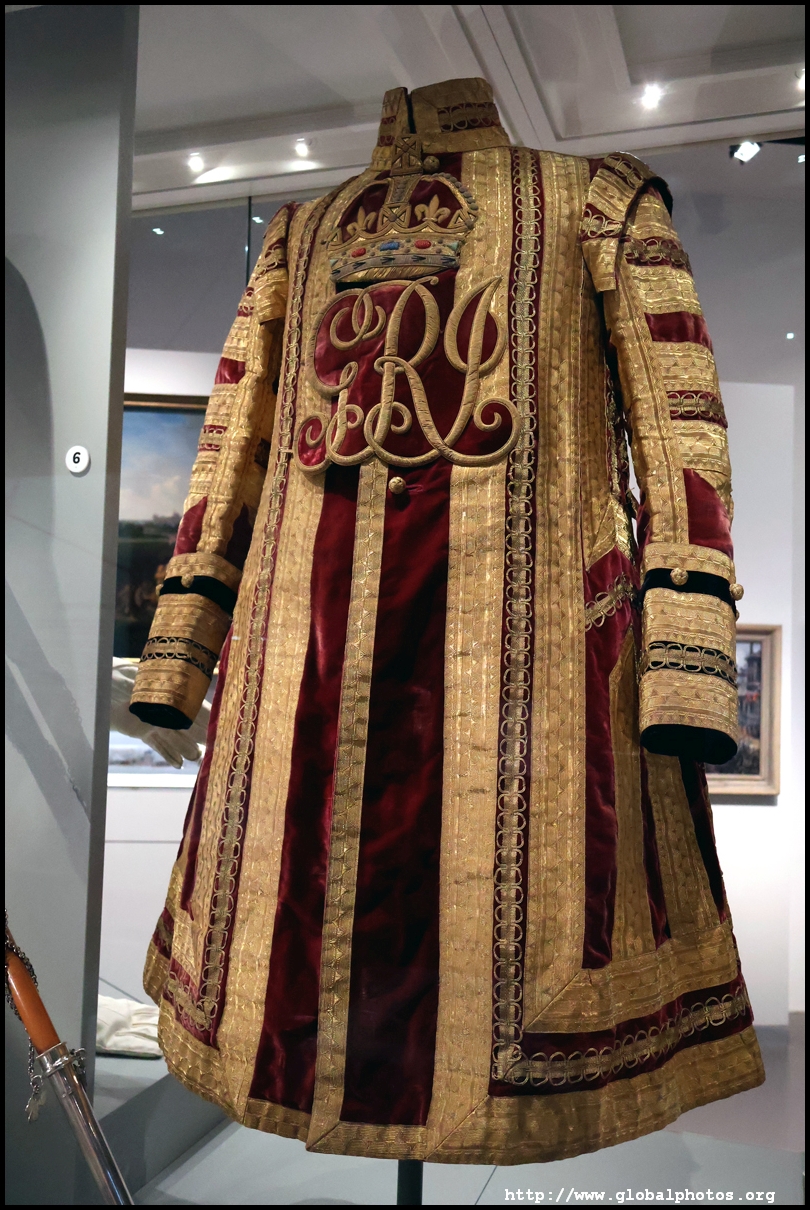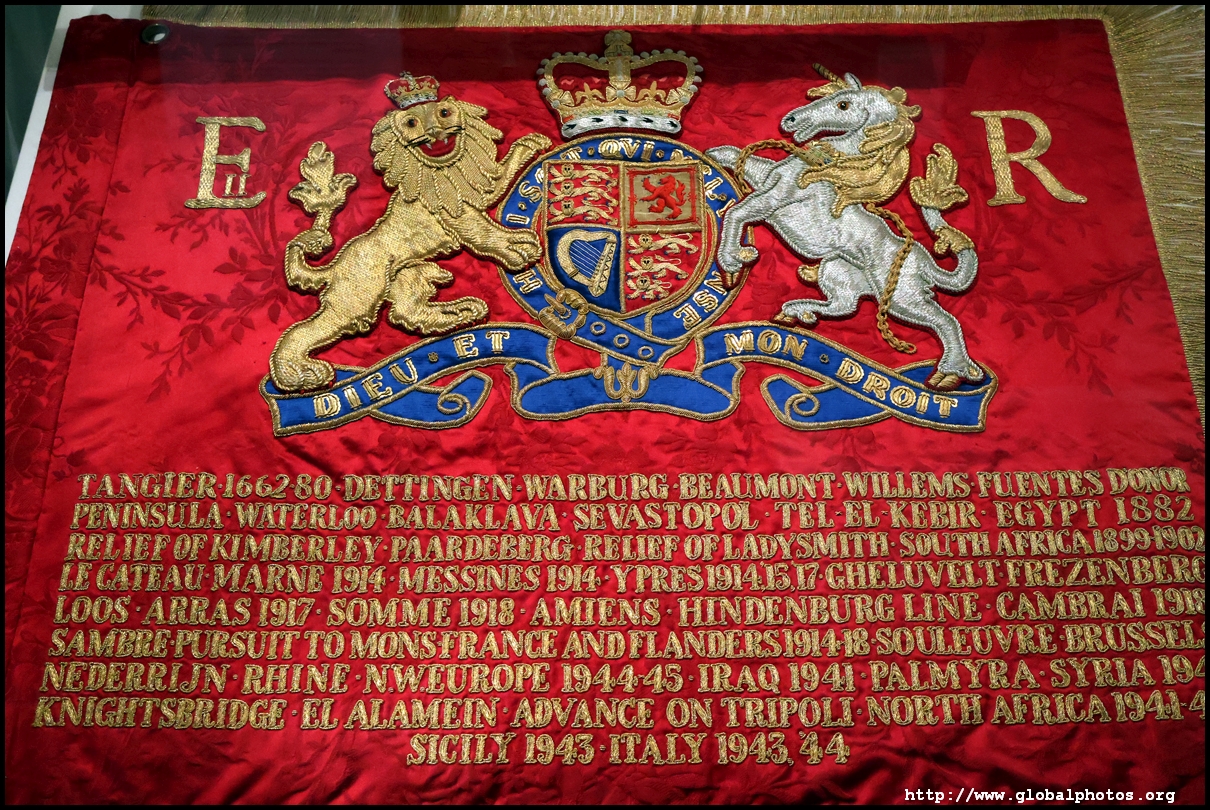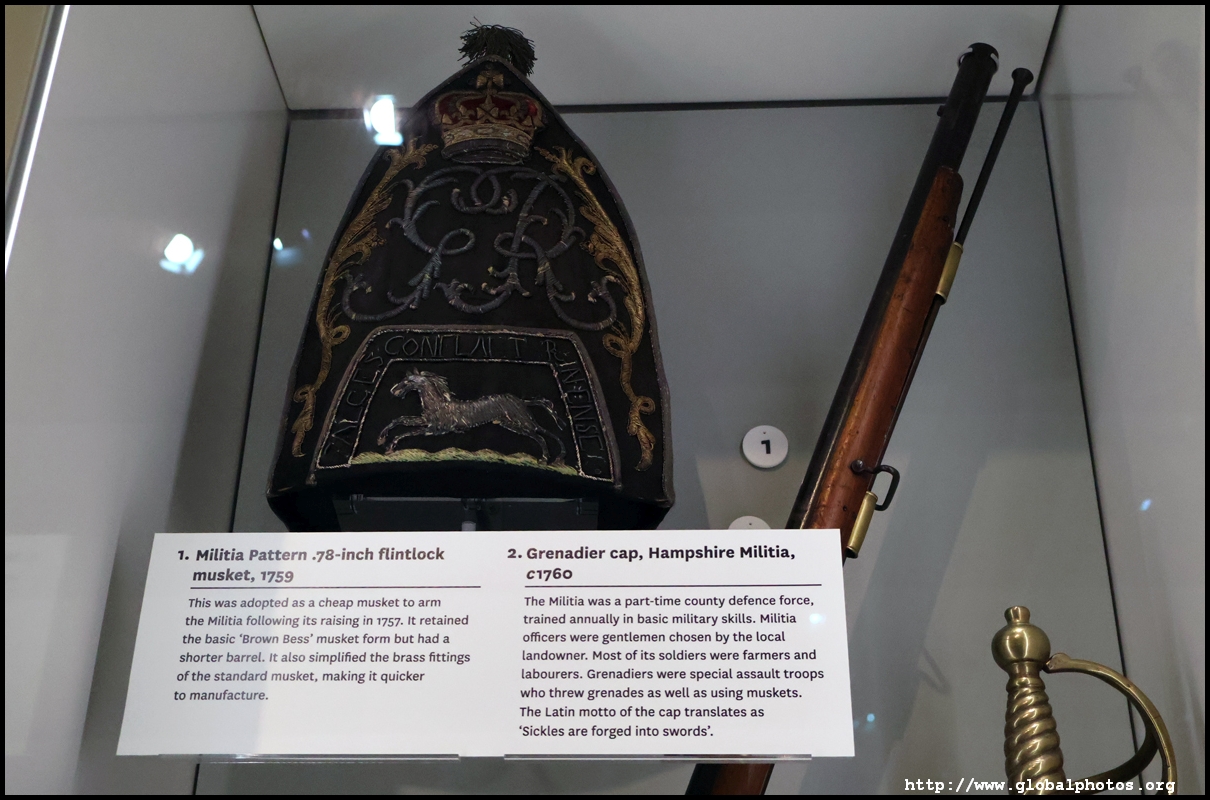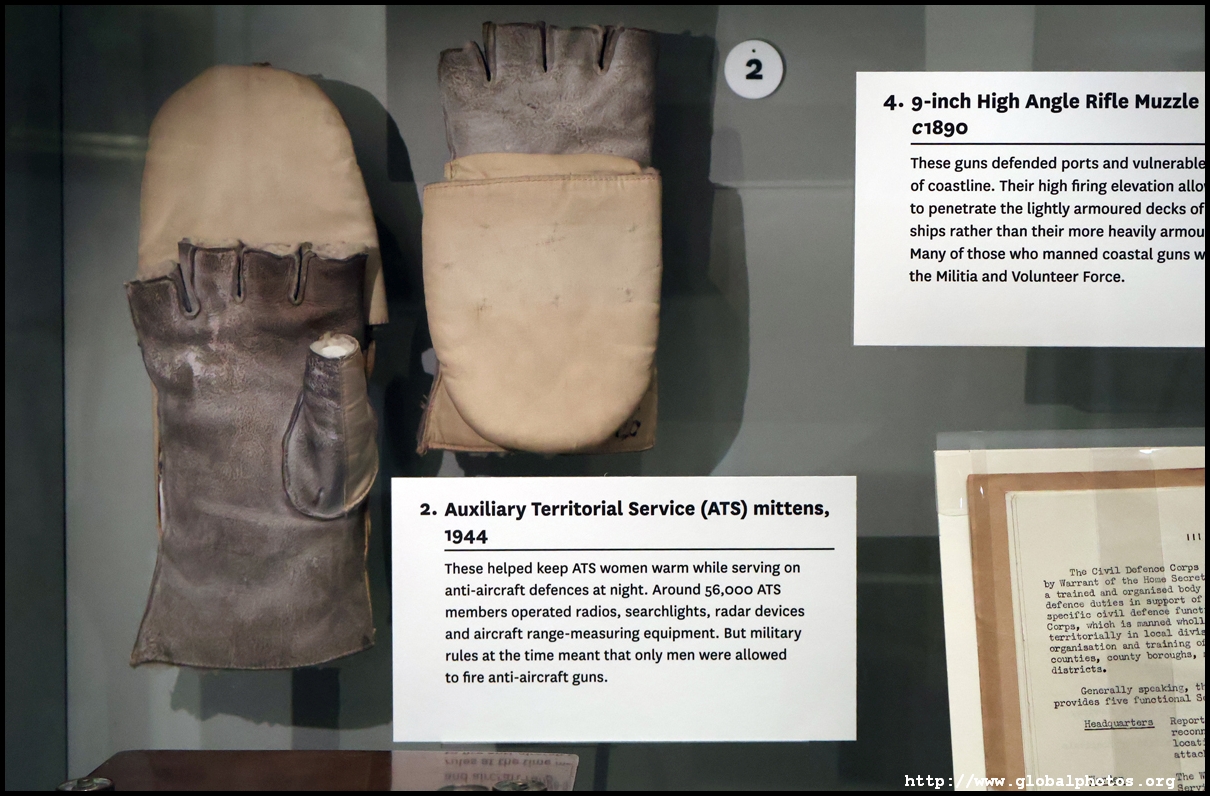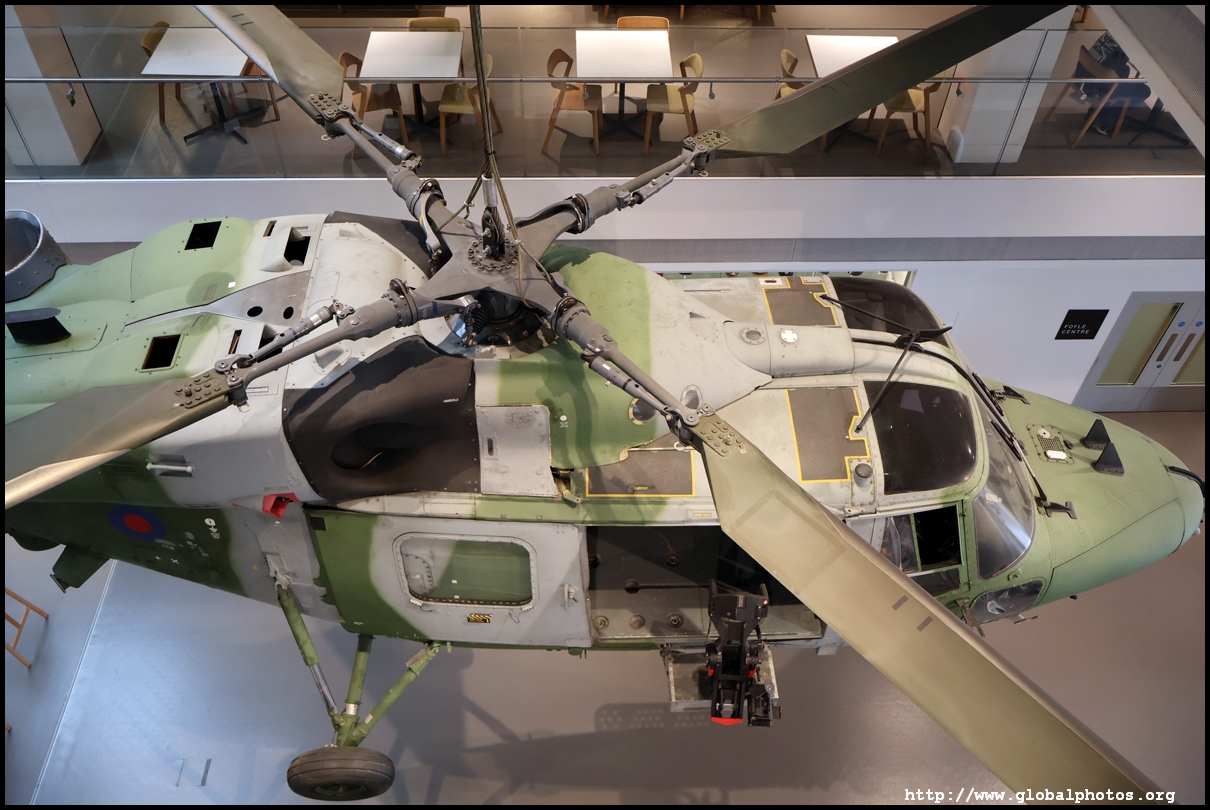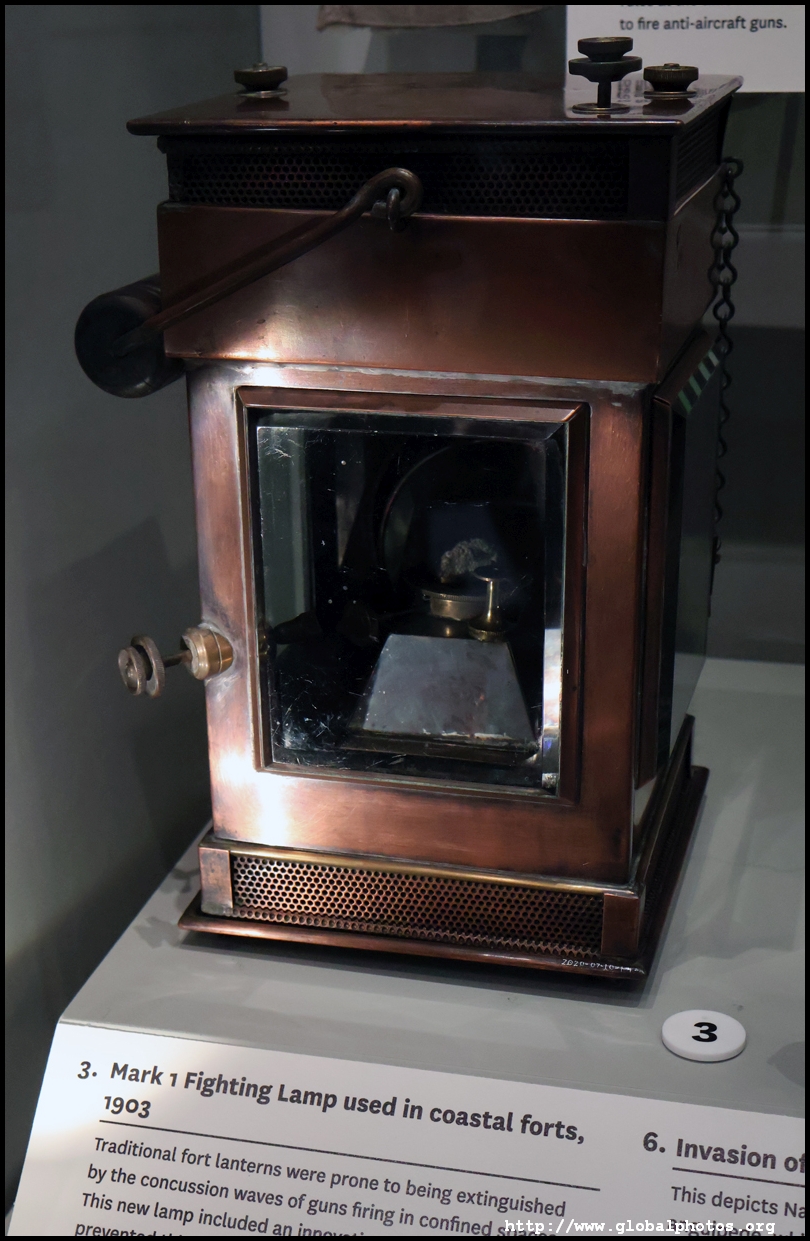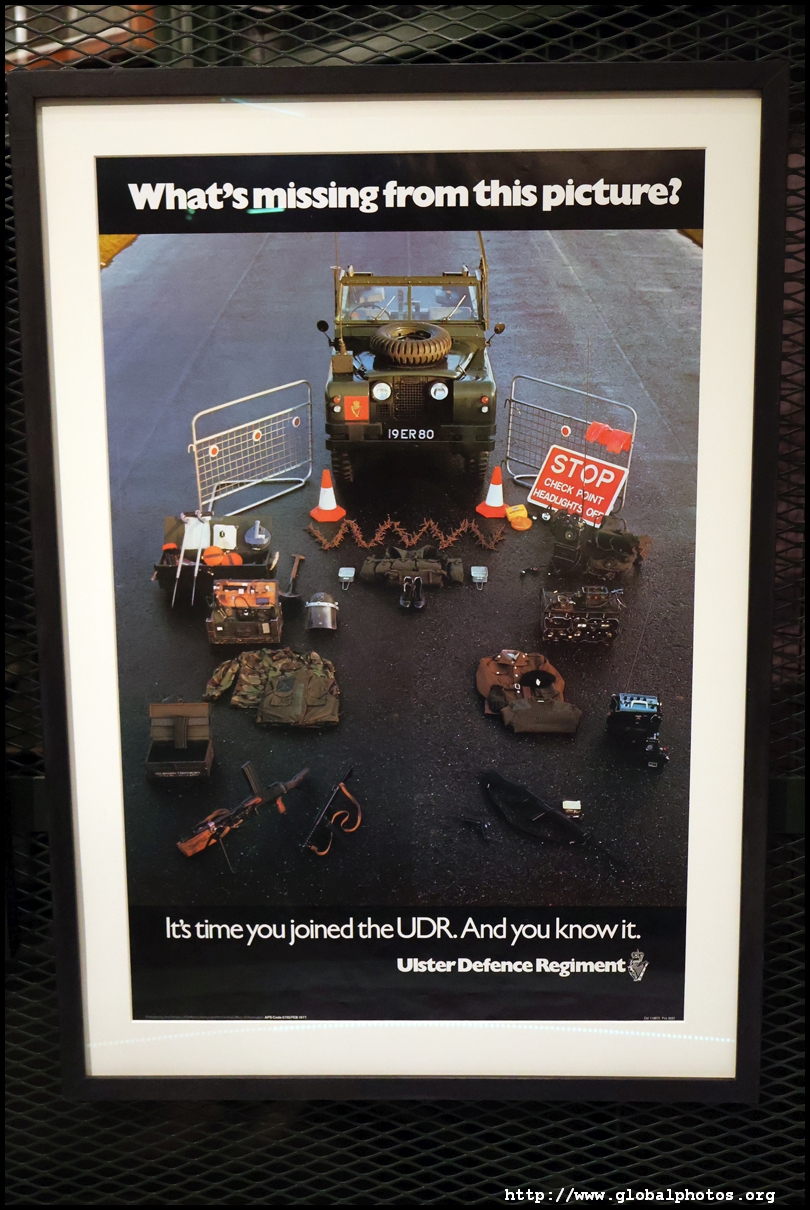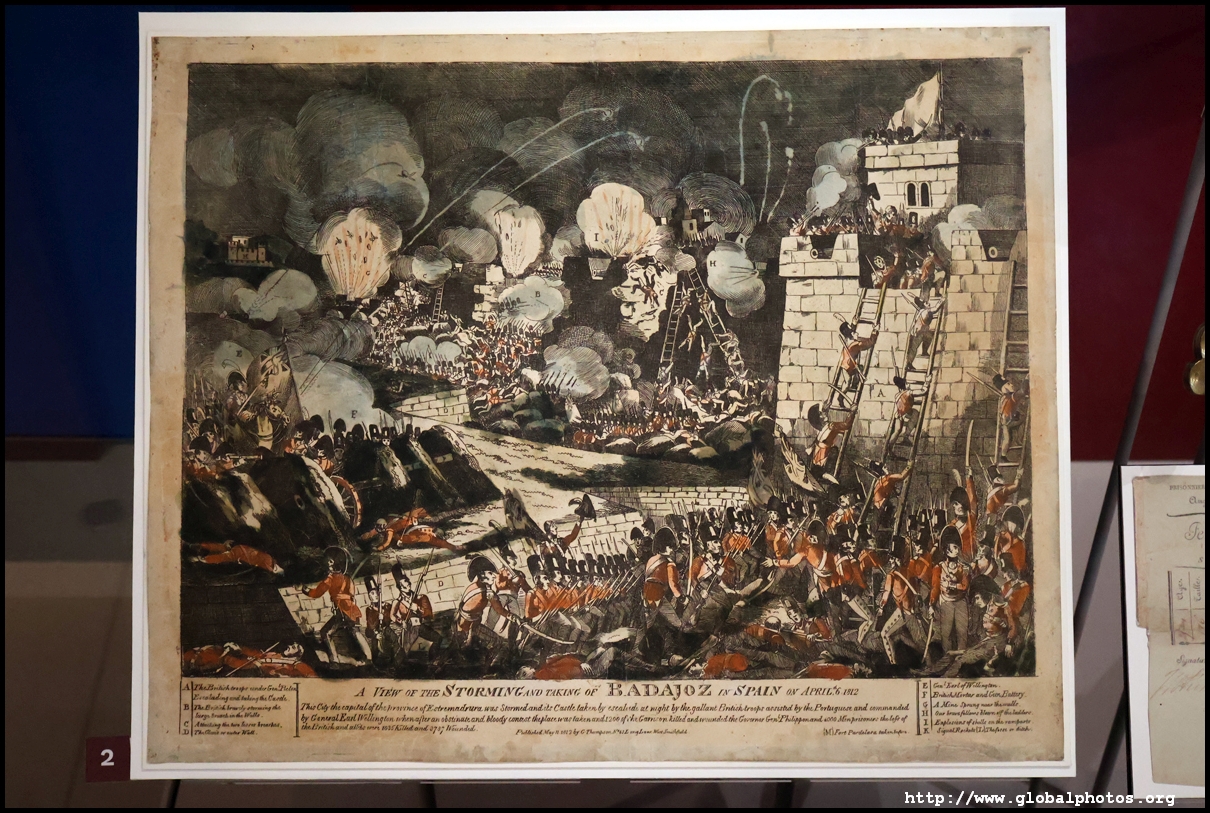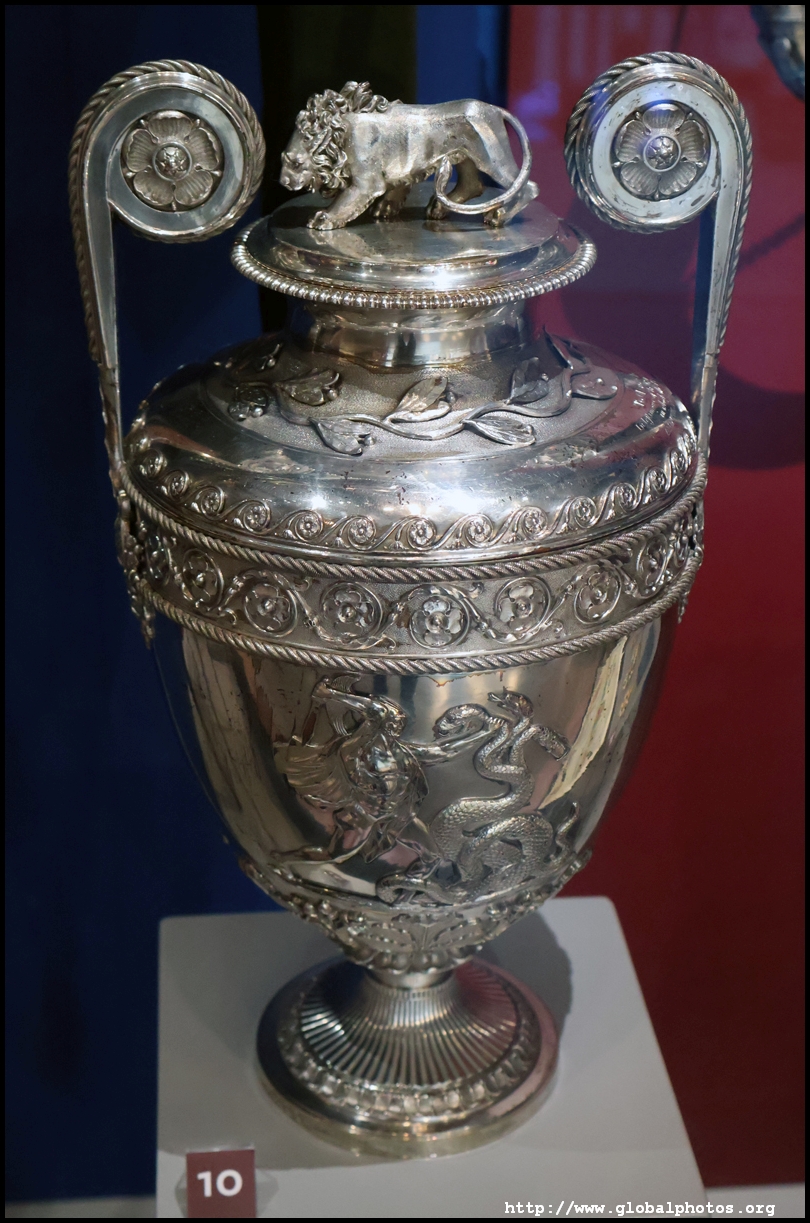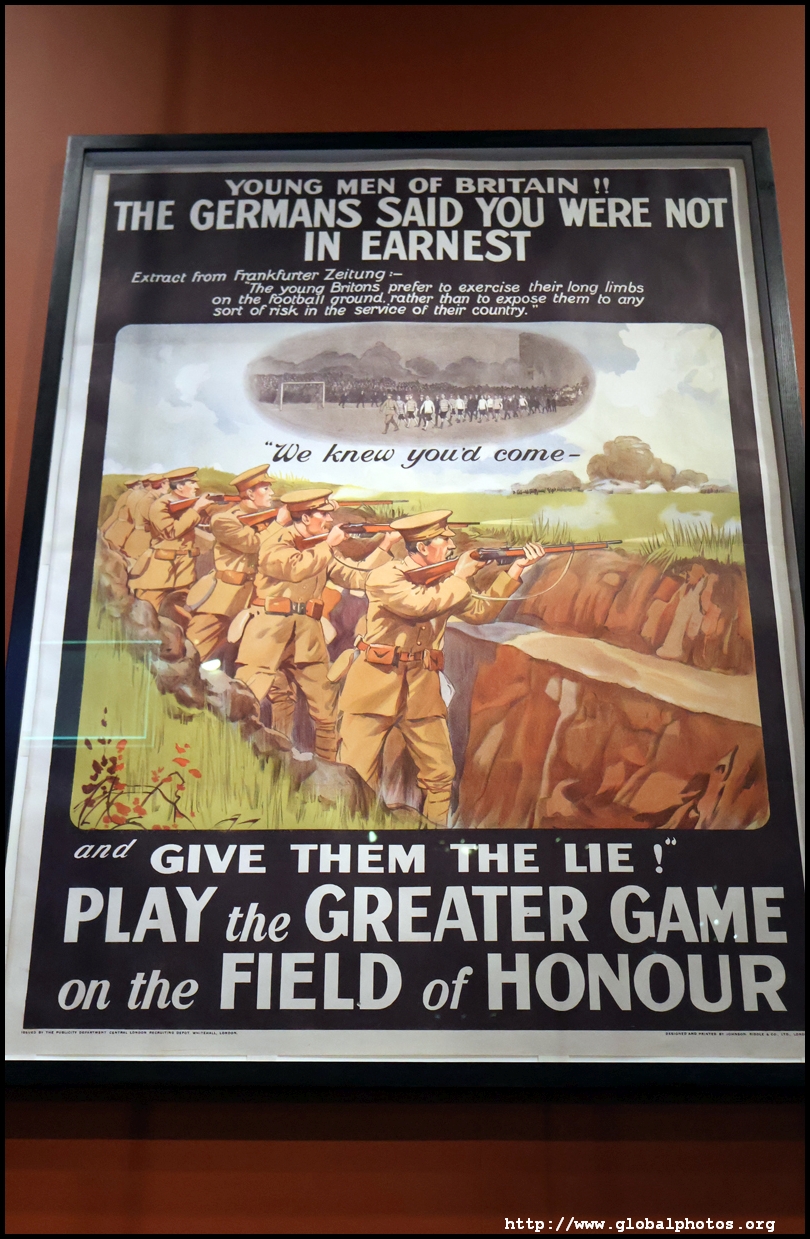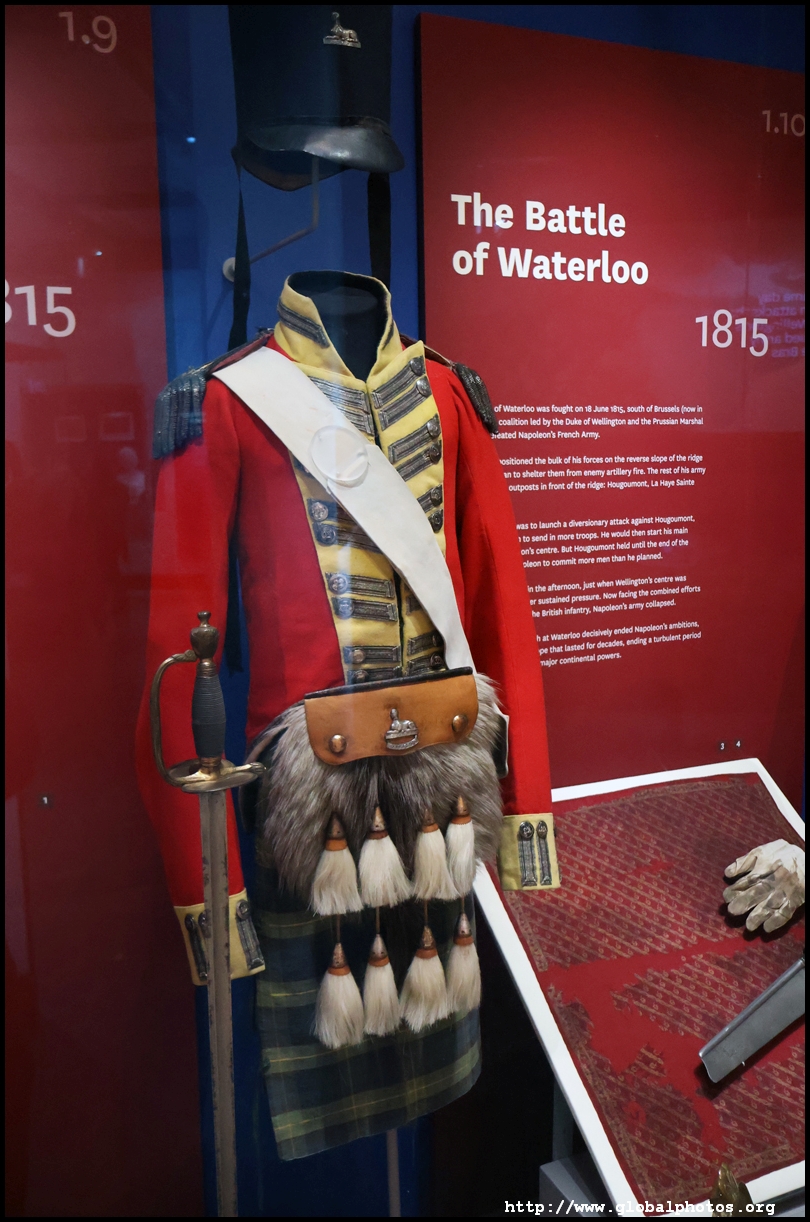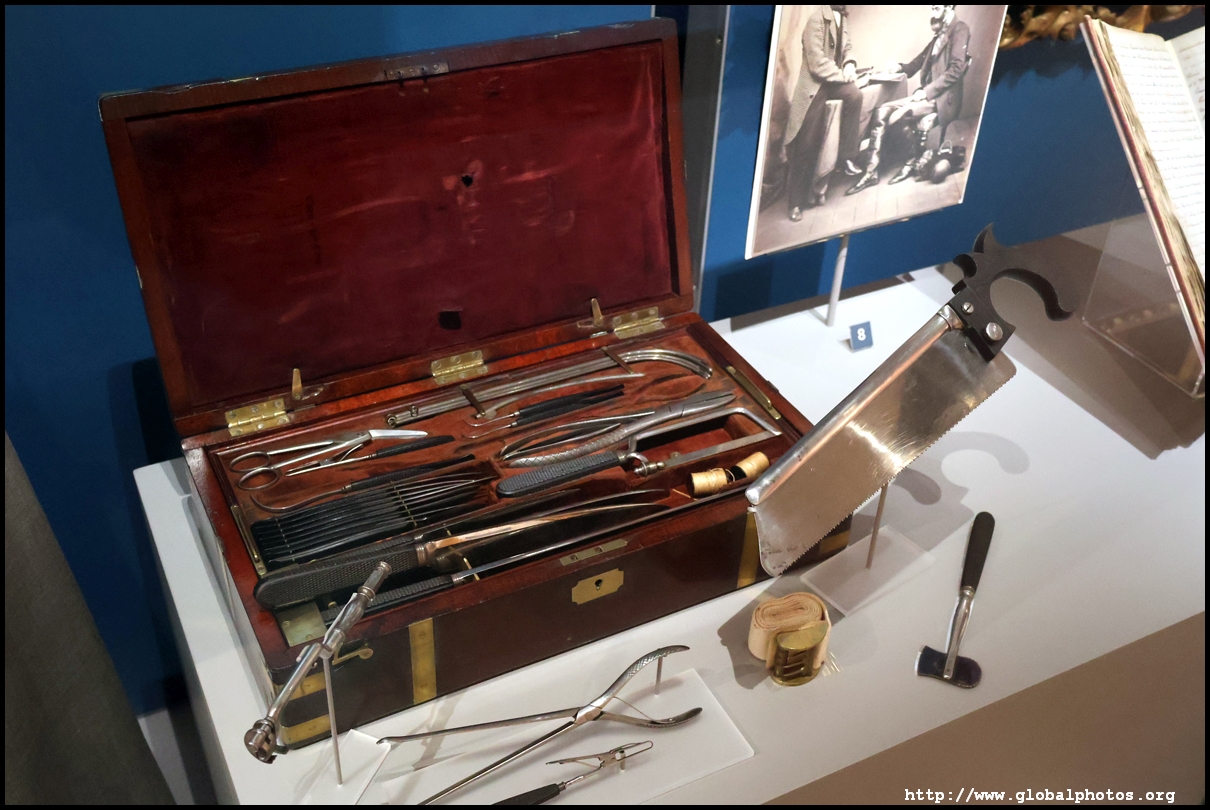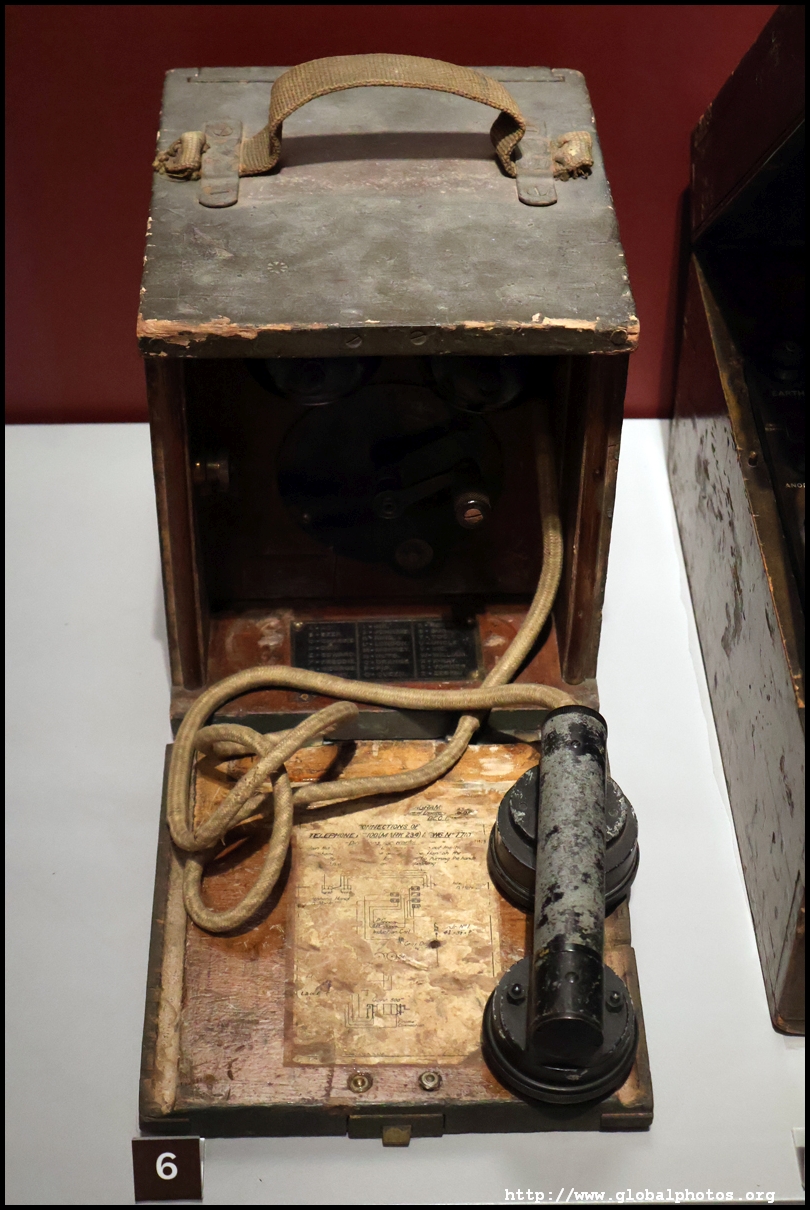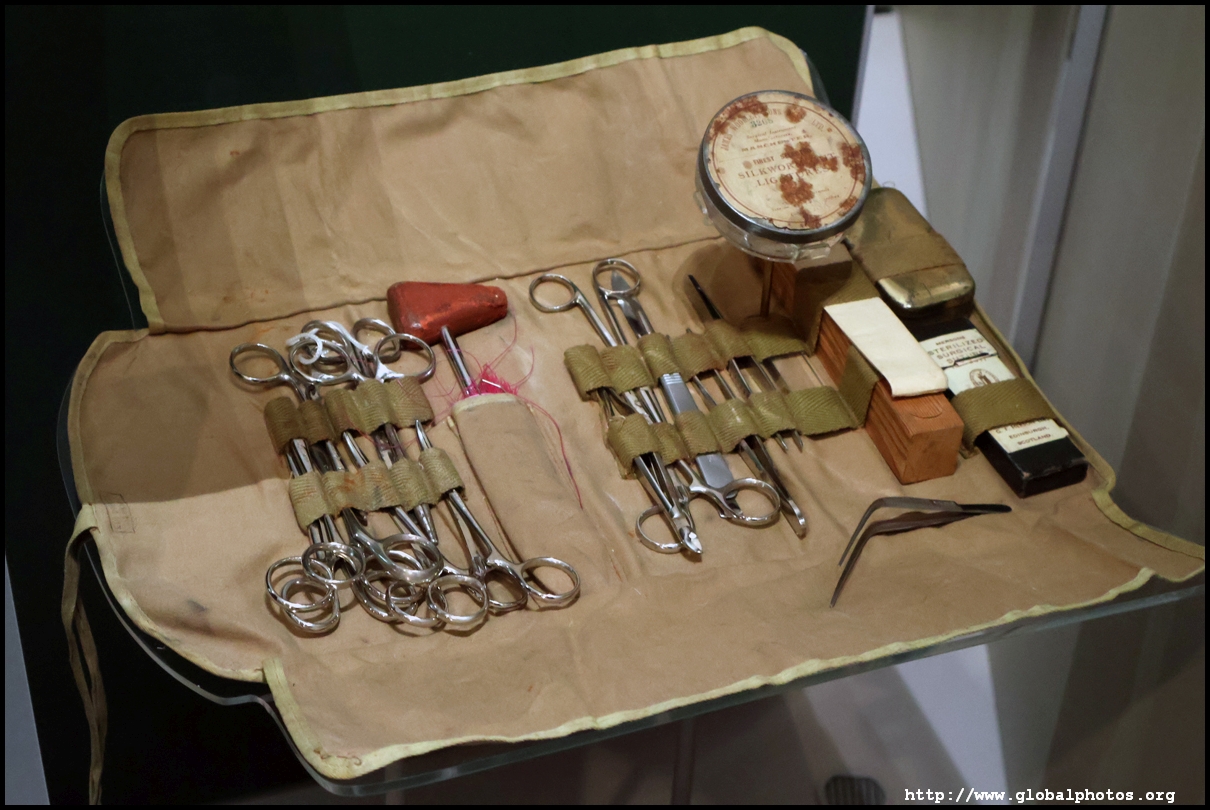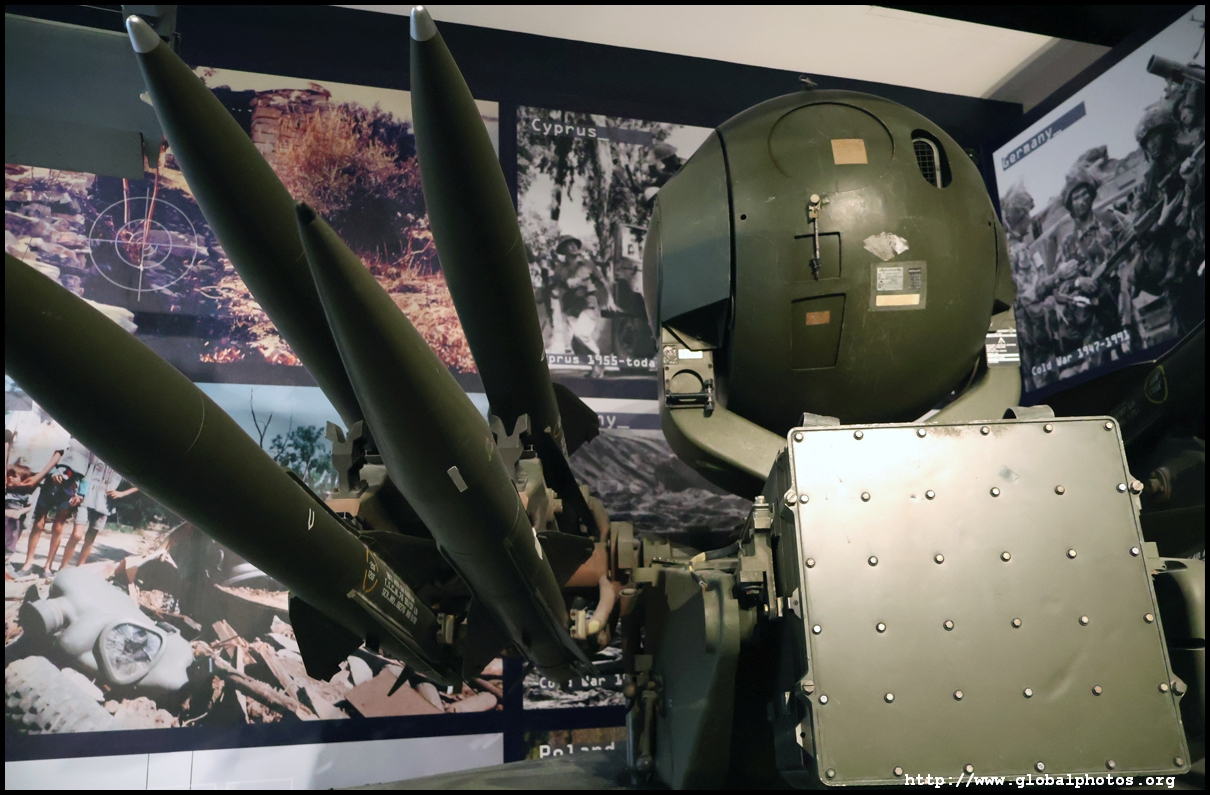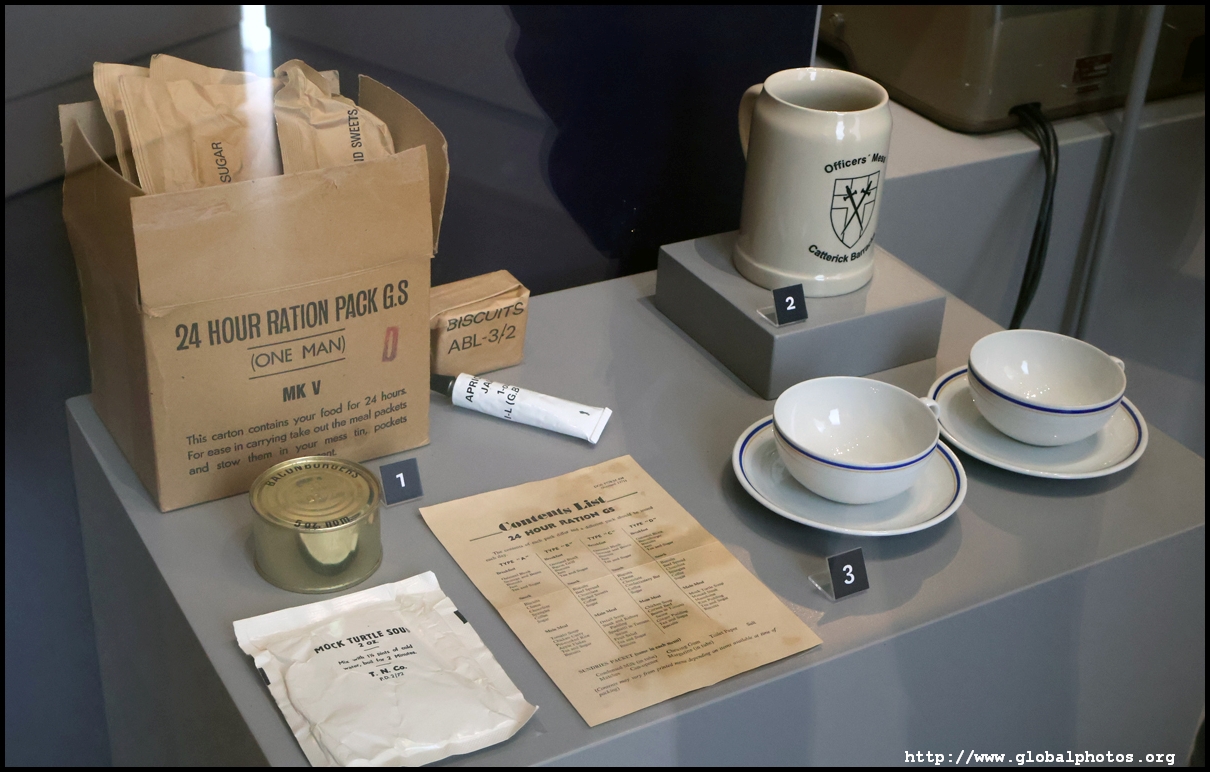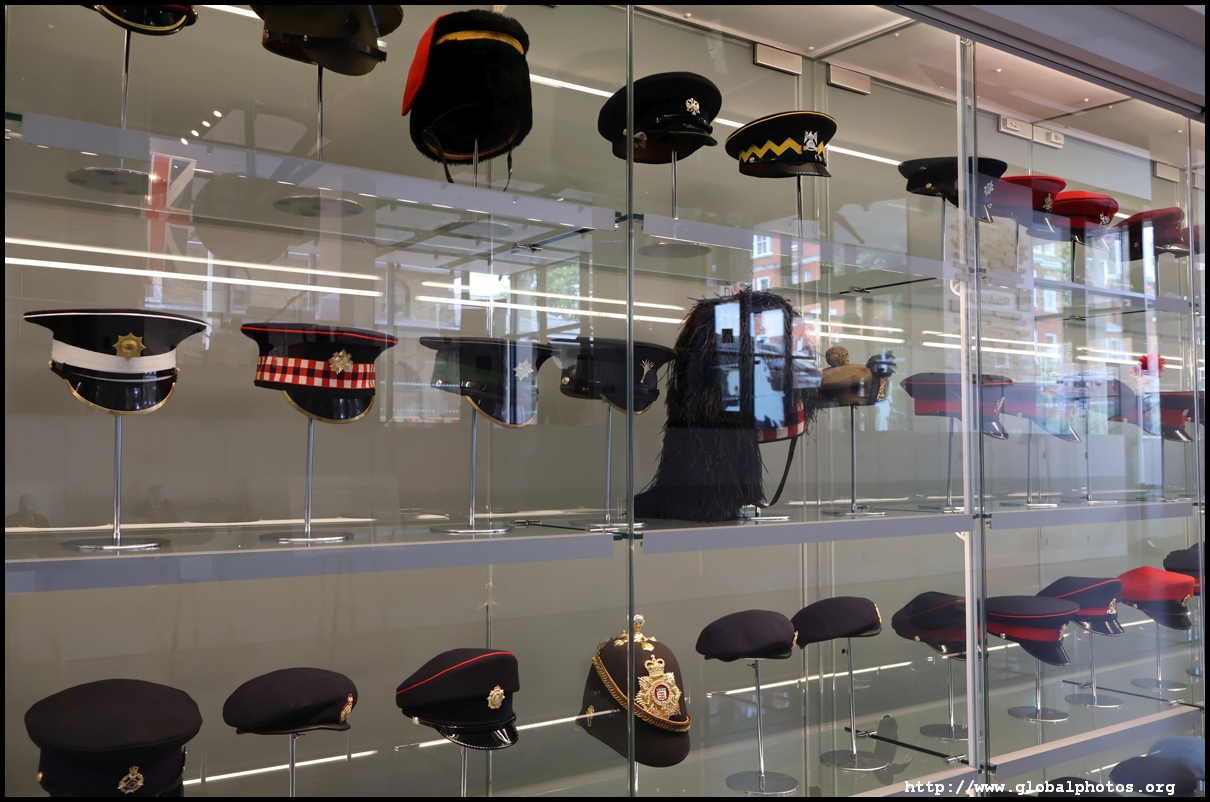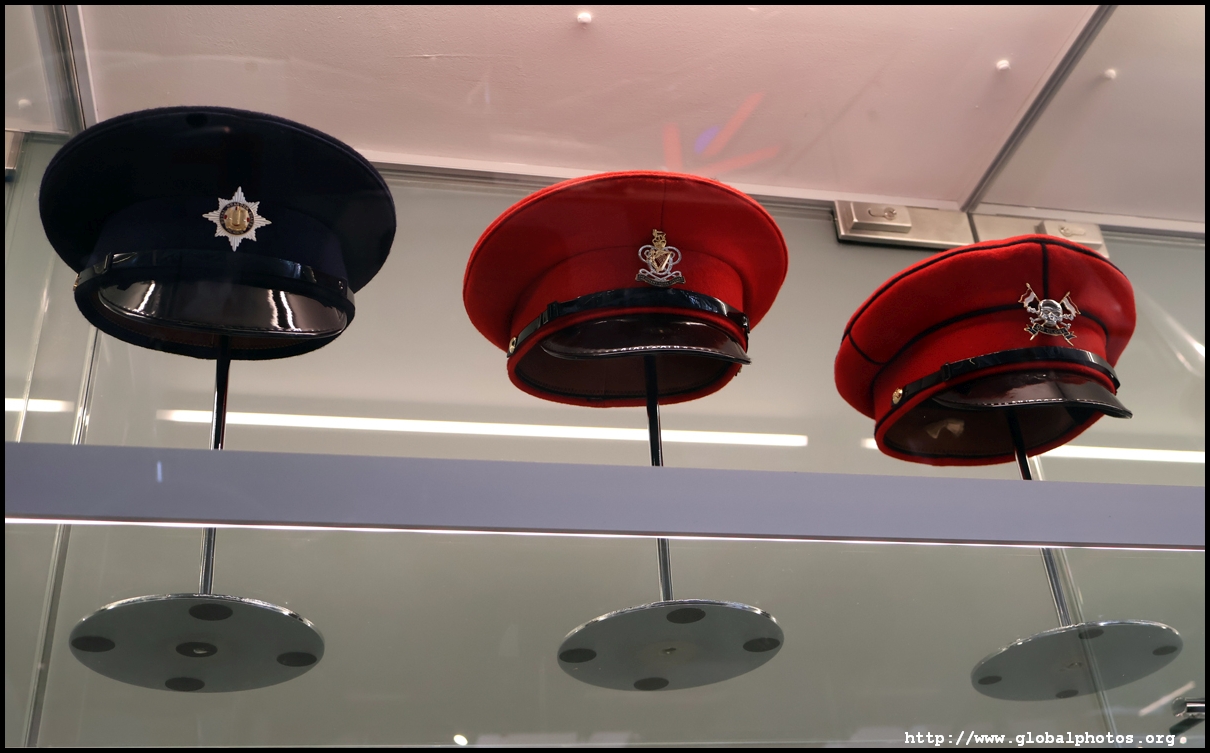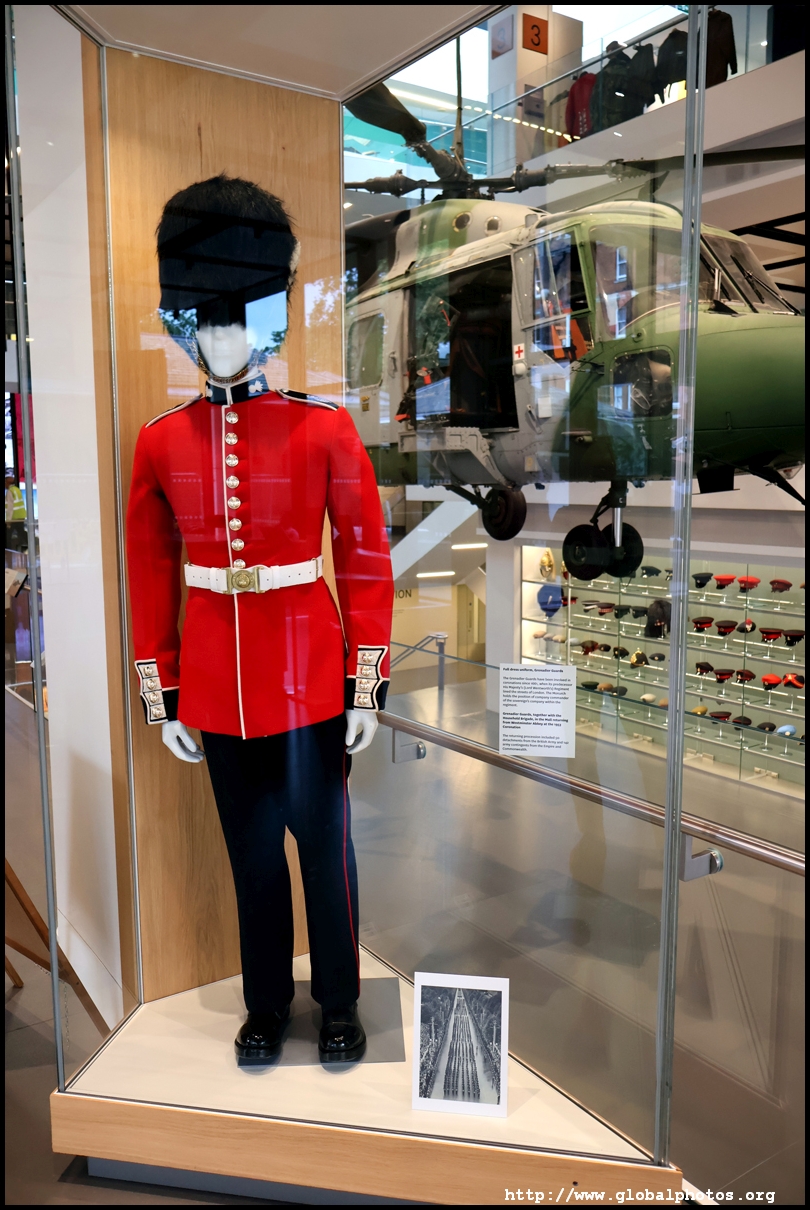London Photo Gallery - National Army Museum
The National Army Museum in Chelsea traces the British Army's history and involvement in a number of global conflicts. It moved to its present site in 1971 with a collection from the 17th century English Civil Wars onwards.You can't miss the entrance, which has a big tank on display. The 75-ton Challenger 2 entered service in 1994 and has served in Kosovo, Bosnia, Iraq, and the Ukraine.
Right : Harry Jenkins joined the Army Service Corps during World War I and kept this sketchbook to record theatricals, trench life and battlefield scenes.
Left : British soldiers serving in Germany carry this card, with this example belonging to Michael Wickens from the Royal Engineers.
Right : This kit has medicines to deal with tropical diseases such as malaria.
Left : In tropical regions, these shako covers help protect from sun stroke. Other tools include face veils to keep insects out.
Right : The British seized the Tipu Sultan's treasury after he was killed in 1799, which included this turban with a Koran inscription.
Right : TE Lawrence was a liaison officer fighting the Turks. Dressed like his Arab hosts, he convinced them to join the British strategy.
Left : This palanquin belonged to the Dowager Empress of China. It was taken by Major-General Sir Alfred Gaselee when his contingent occupied and looted Beijing in 1900.
Left : This watercolour shows King Thibaw being captured by British soldiers in 1885. He was accused of interfering with trade and not protecting British subjects and interests in Burma.
Left : This pikeman's armour weighs around 25kg and dates from the mid-17th century.
Right : This bandolier holds gunpowder, with each bottle having enough for one musket shot.
Left : These pipes belonged to the Prince of Wales' Leinster Regiment. Irish war pipes have historically been used to lead soldiers into battle.
Right : This 1938 poster appeals to Scottish patrotism with a Highland clansman armed with a sword and shield.
Right : The Boer or Briton board game from the turn of the 20th century promoted imperialism, patriotism, and the Army.
The panoramic scroll celebrates George VI's coronoation procession featuring regiments from across the empire.
Left : With a history going back to the 17th century, the State Dress is the oldest continuously-worn uniform in the Army. It is used by the Household Cavalry during parades.
Left : This general-purpose armoured truck was used to deal with Northern Ireland violence in the 1970s and was nicknamed "Pig".
Left : This satirical print from 1809 depicts the Convention of Cintra, where French forces were removed from Portugal. However, French troops were evacuated in British trips with their looted items and equipment.
Right : The surgeon's medical case from the mid-19th century includes an amputating saw, bullet extractor, and skin forcep.
Left : This World War I field telephone was used by anti-aircraft batteries, which shot down enemey aircraft.
Left : The wireless radio transmitted messages by Morse code with agents behind enemy lines.
Out in the lobby is a huge glass cabinet with many hats arranged neatly. Also look up to see the Lynx helicopter.
| |||
To re-use these photos, please notify me by email : asiaglobe@yahoo.com.hk.
